The document discusses the architecture and components of ASP.NET AJAX extensions. It describes the ScriptManager control as the starting point for ASP.NET AJAX pages. It also covers UpdatePanel for partial page updates, triggers, and UpdateProgress for displaying update status. Web services using ASMX are also discussed as endpoints for asynchronous callbacks from client-side scripts.


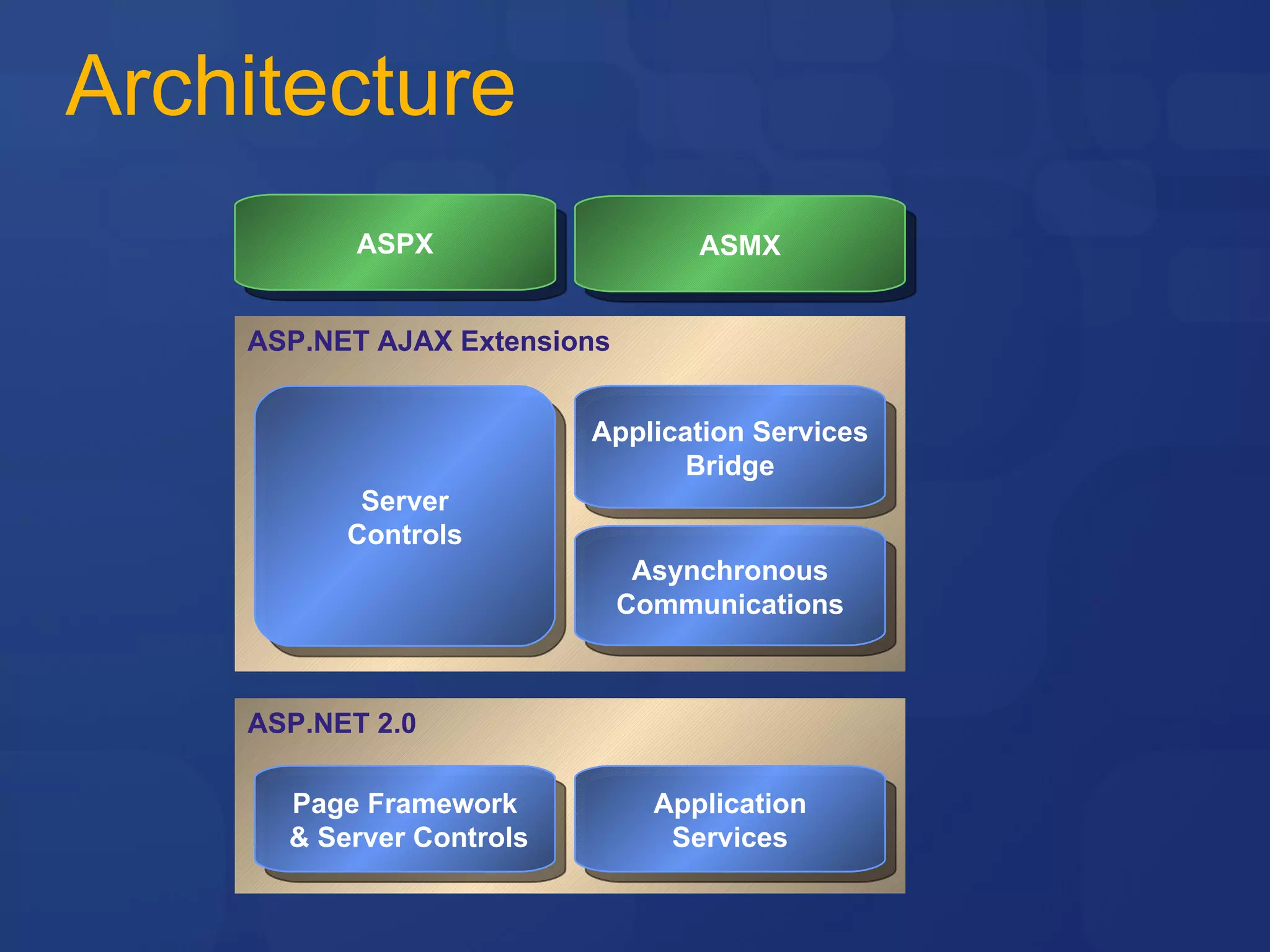
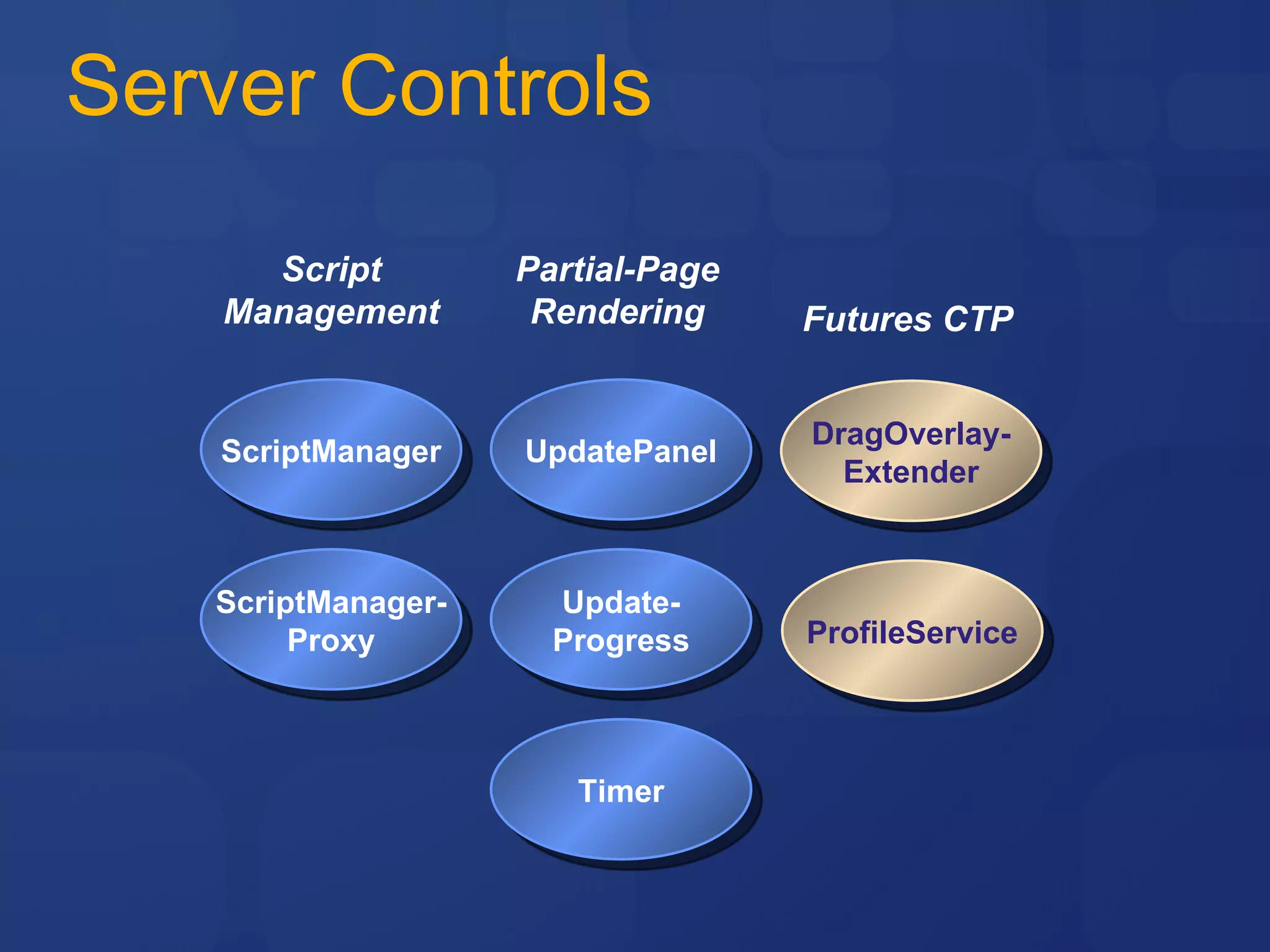
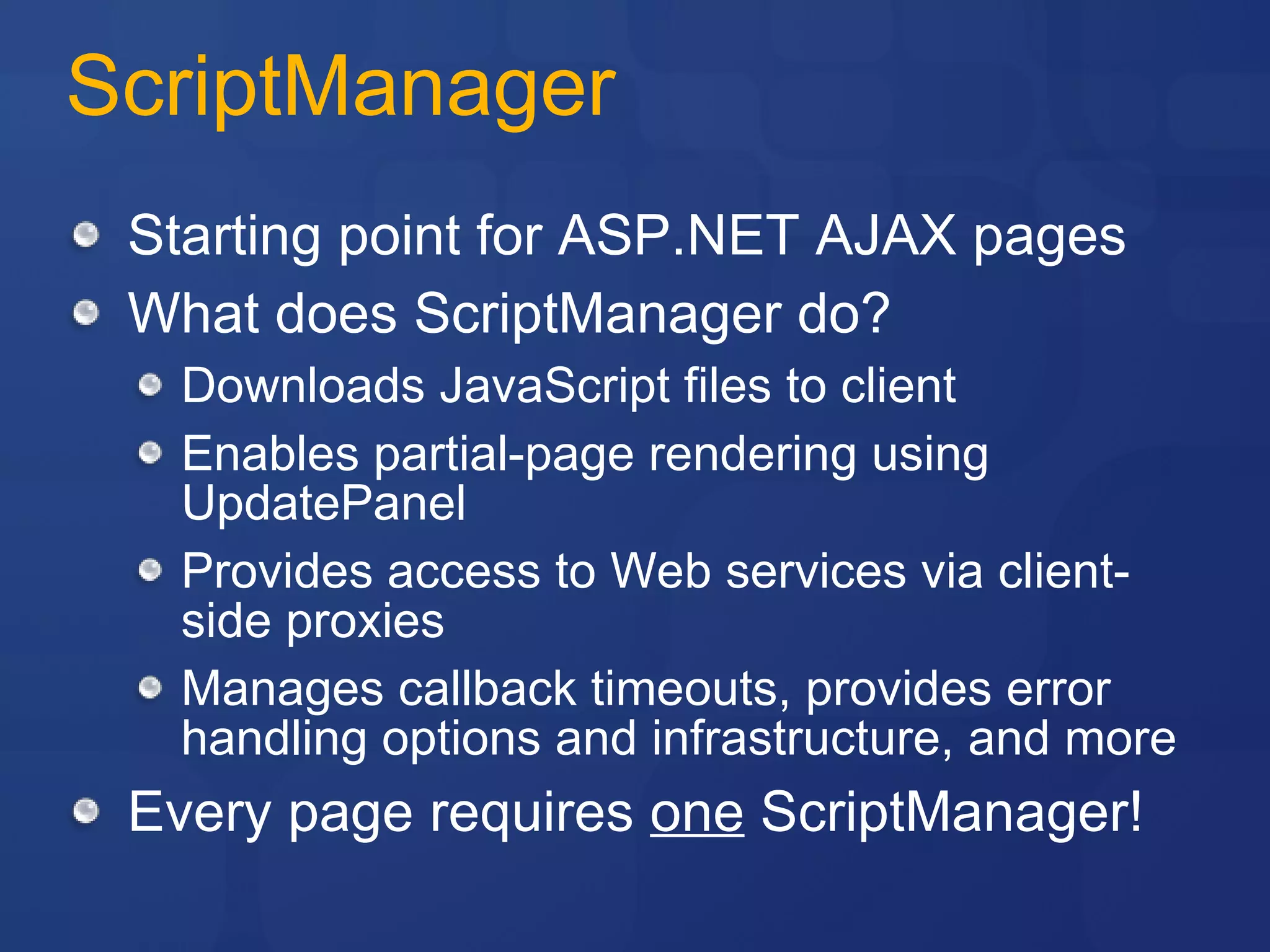
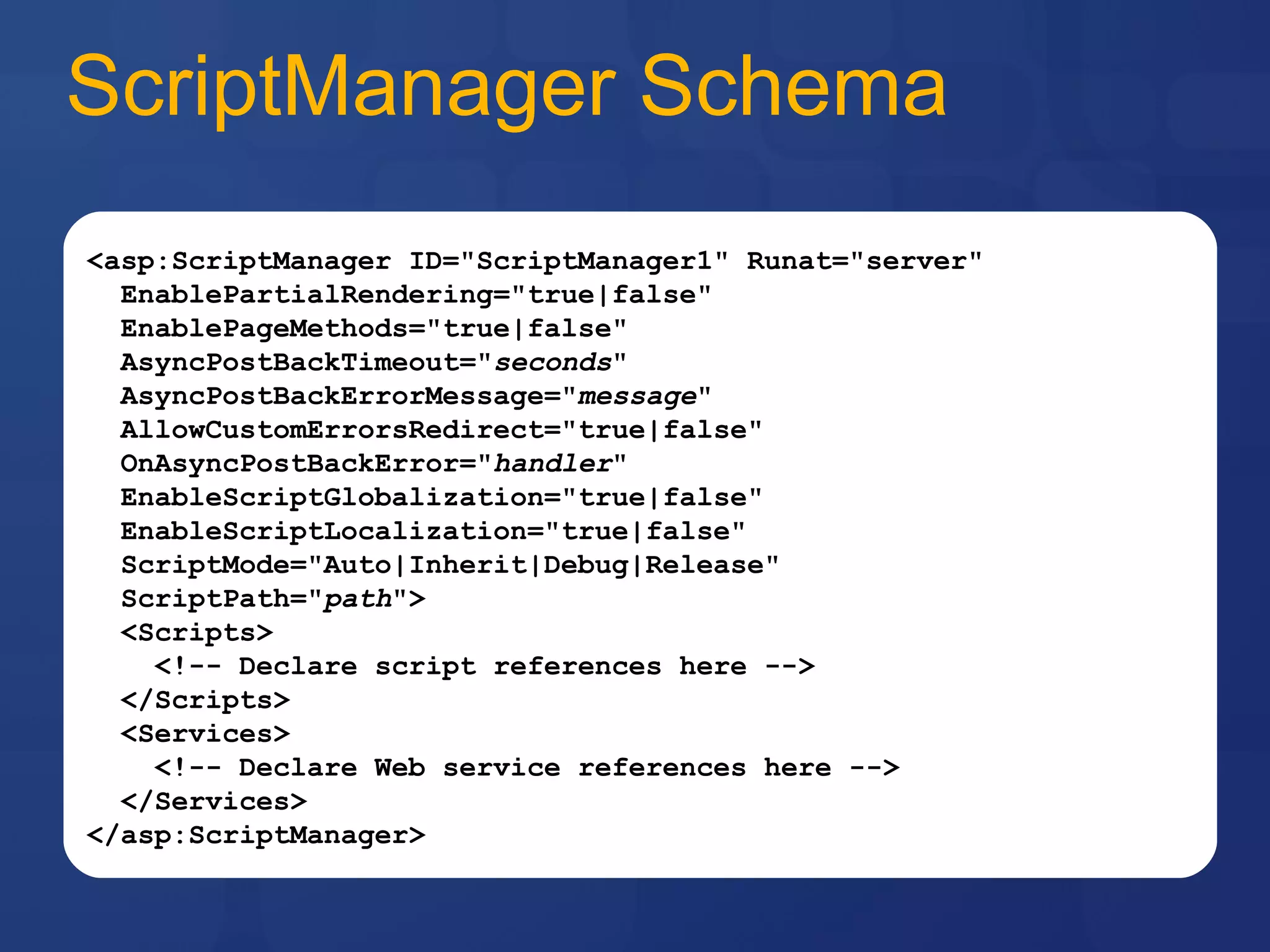
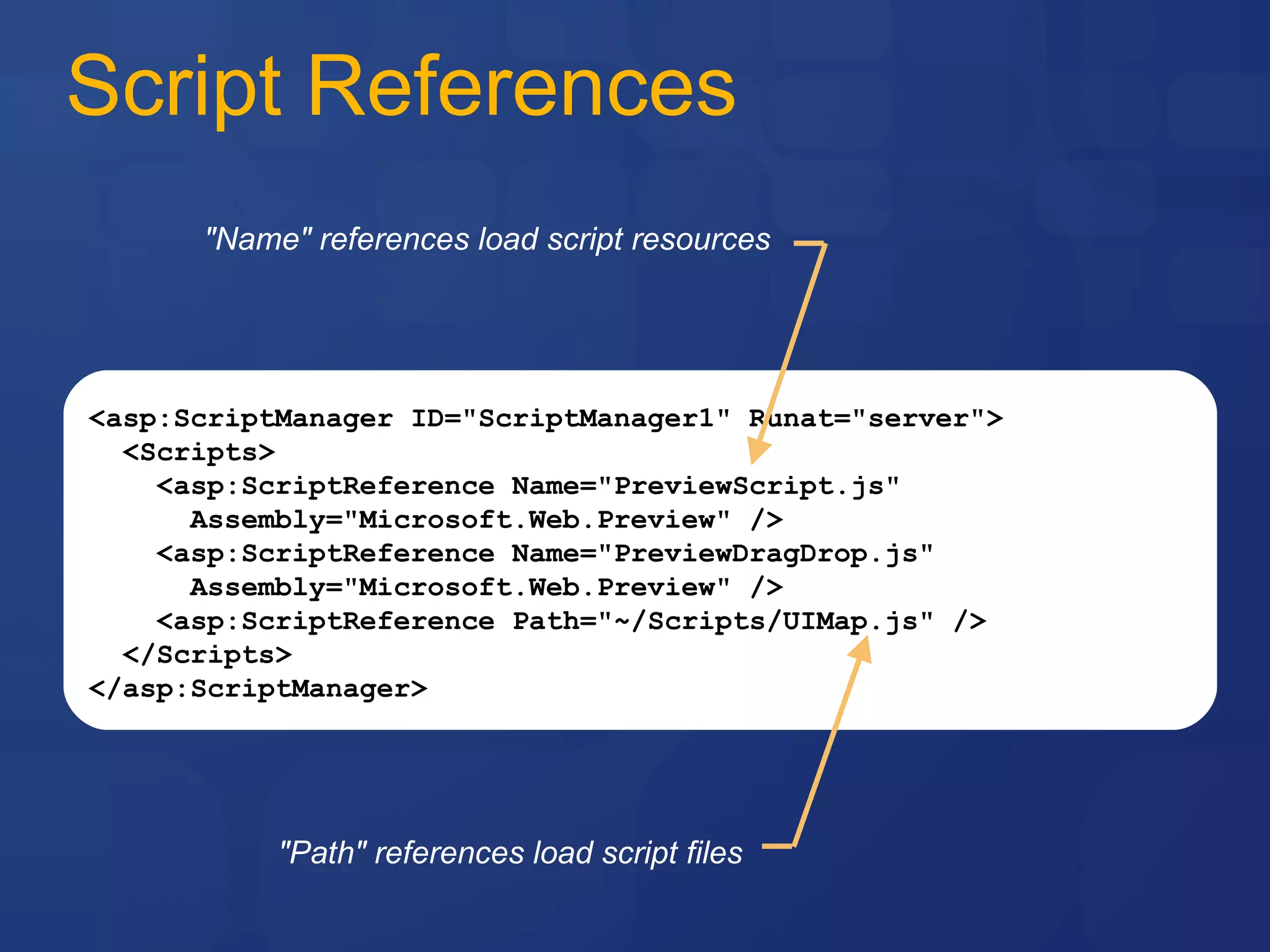
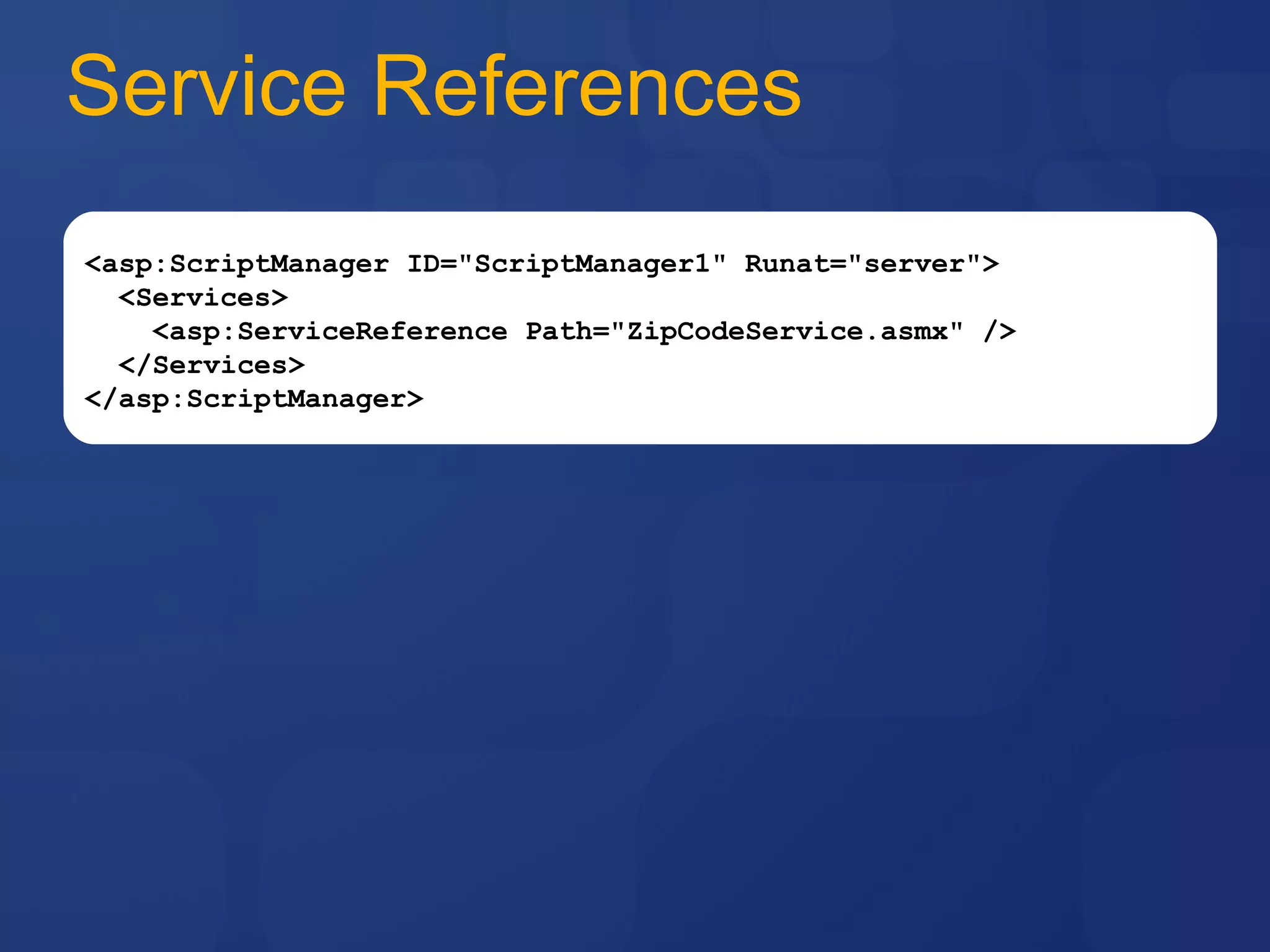
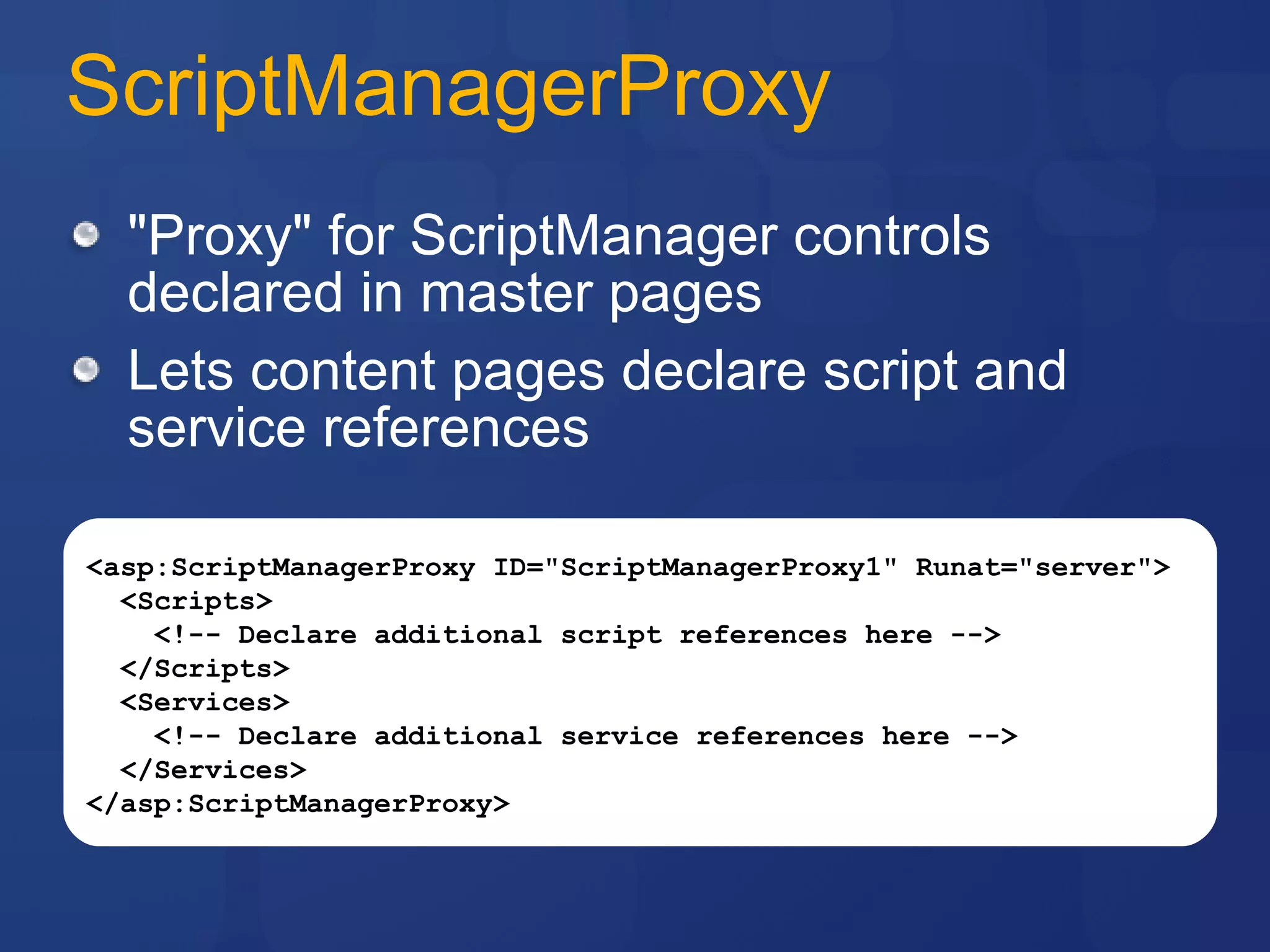
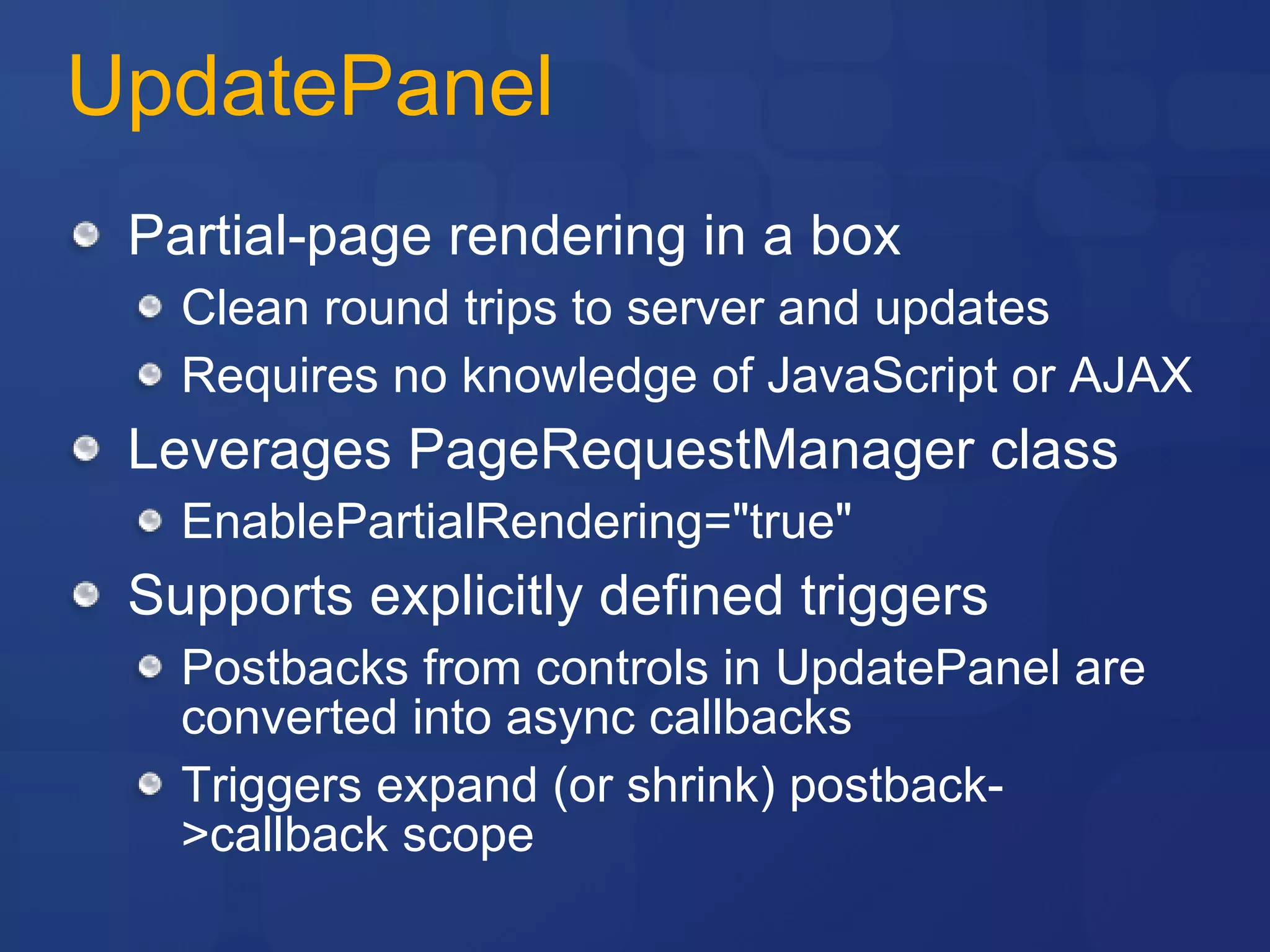
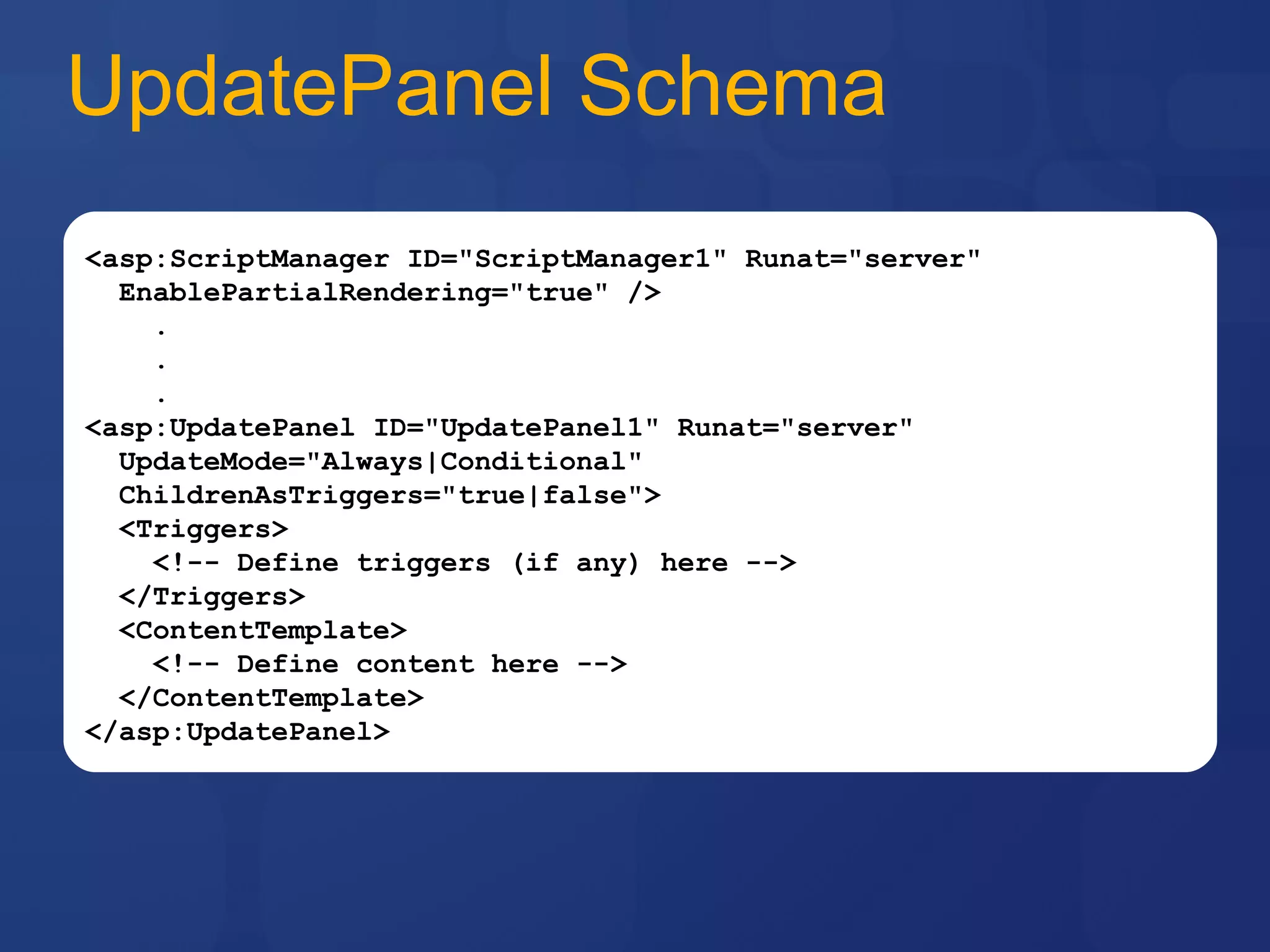
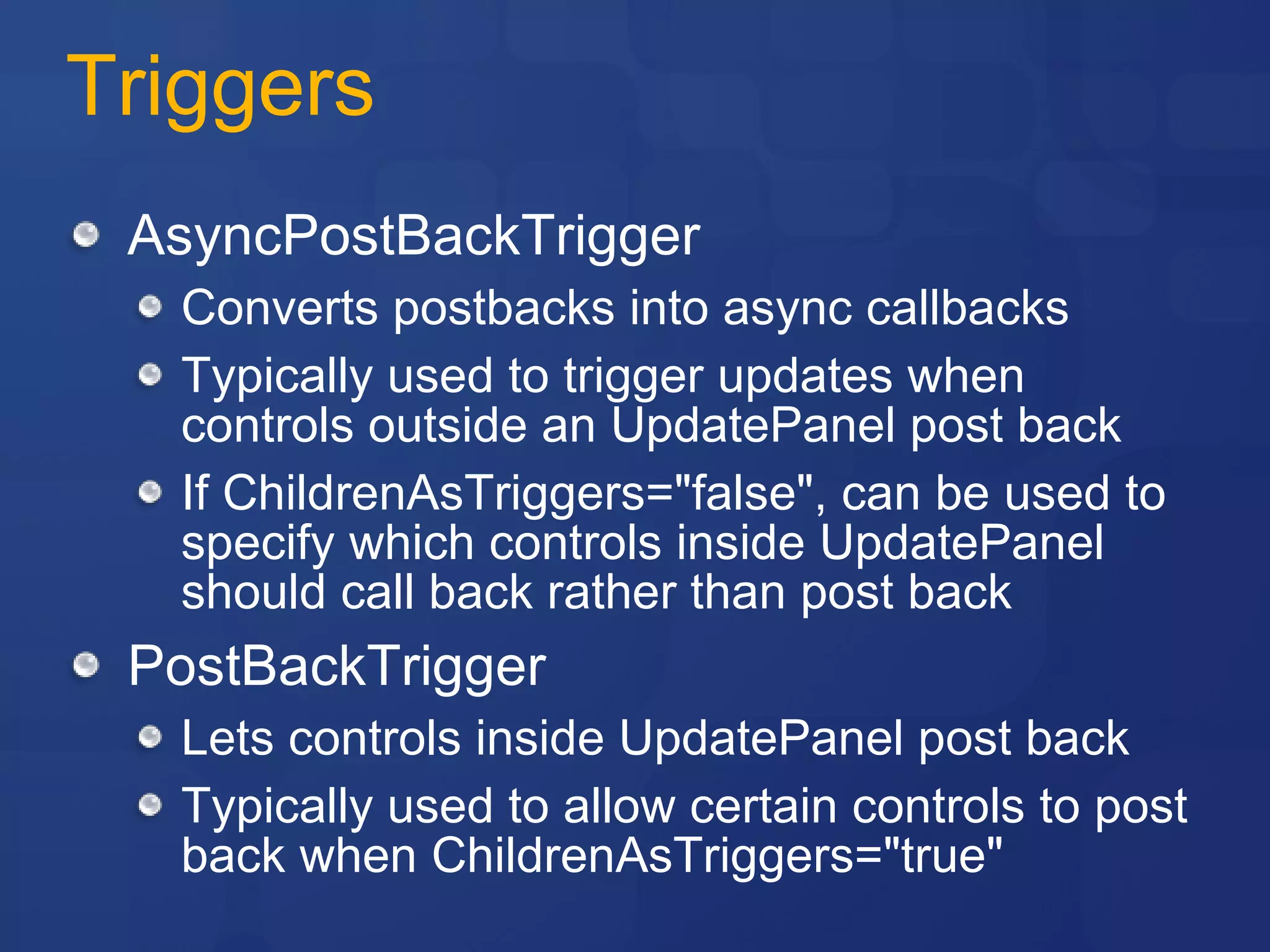
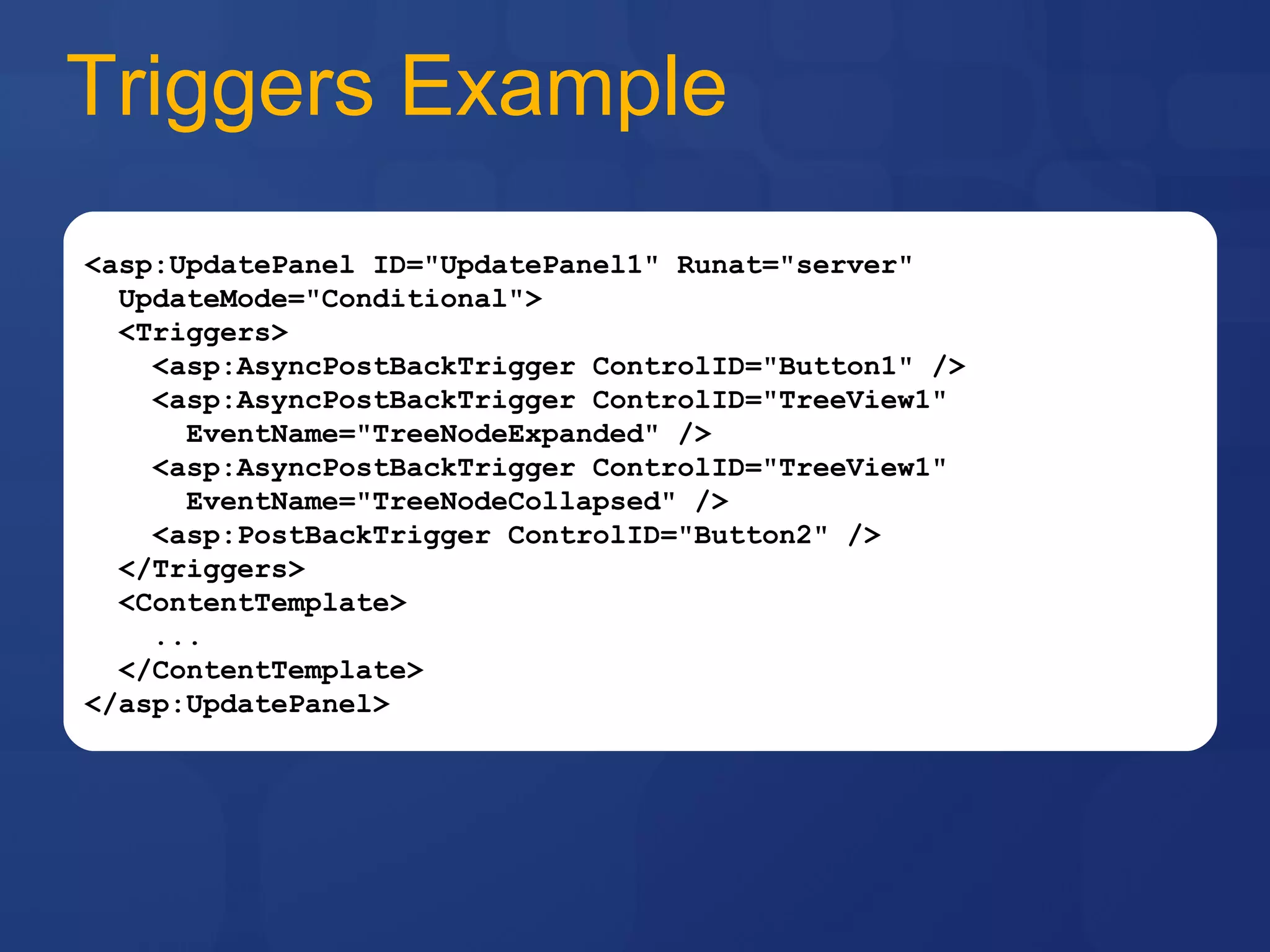
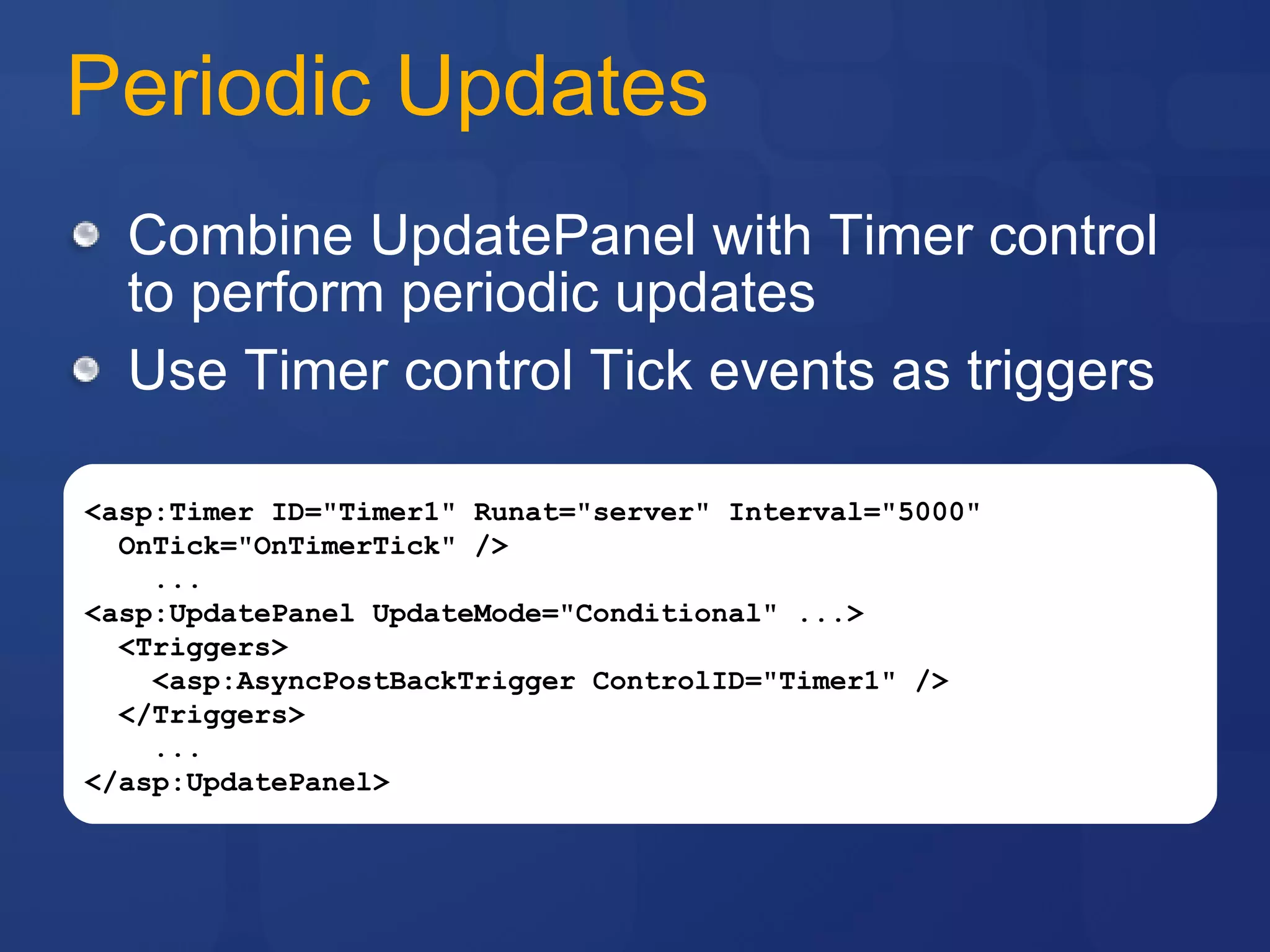

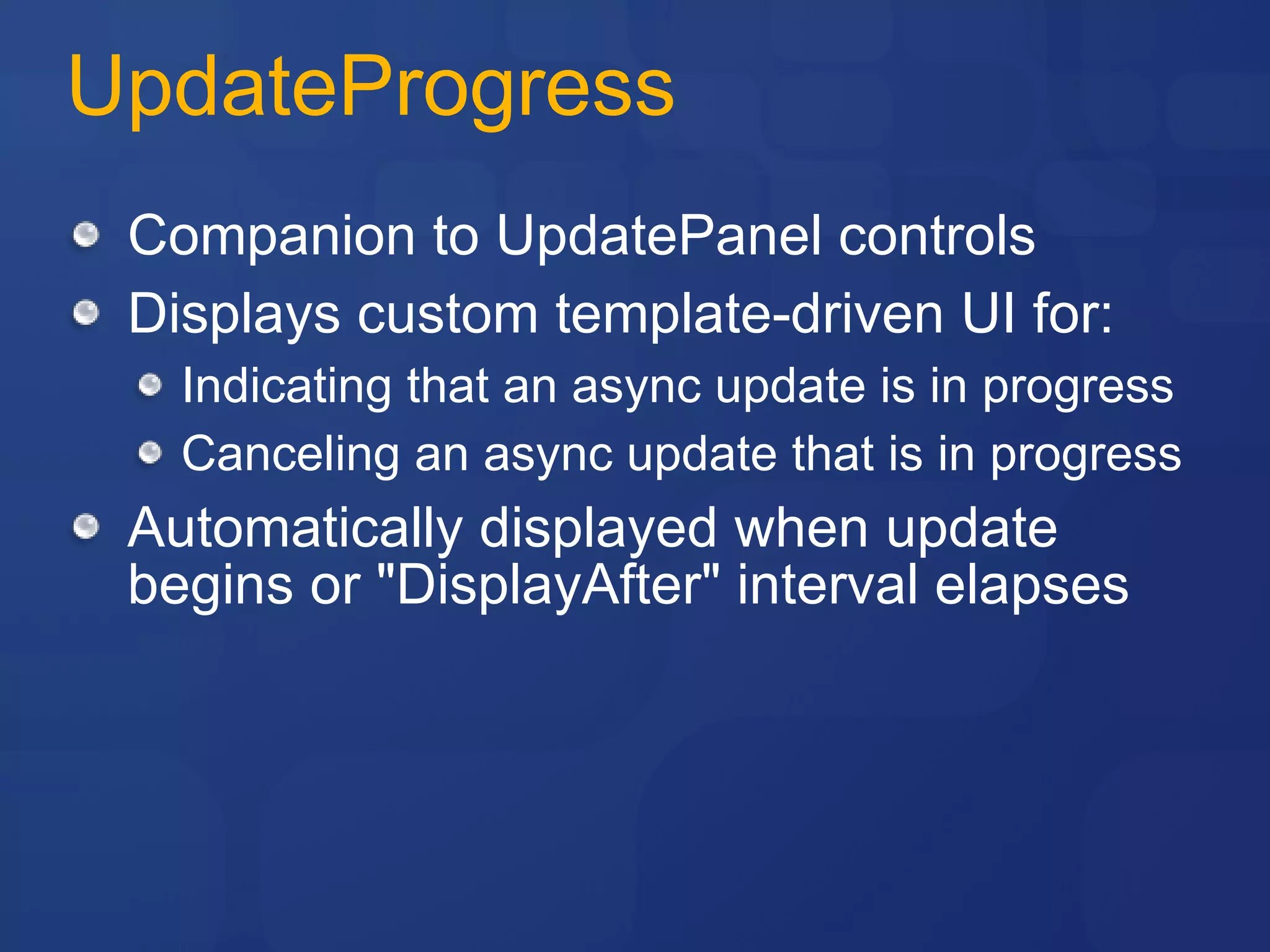
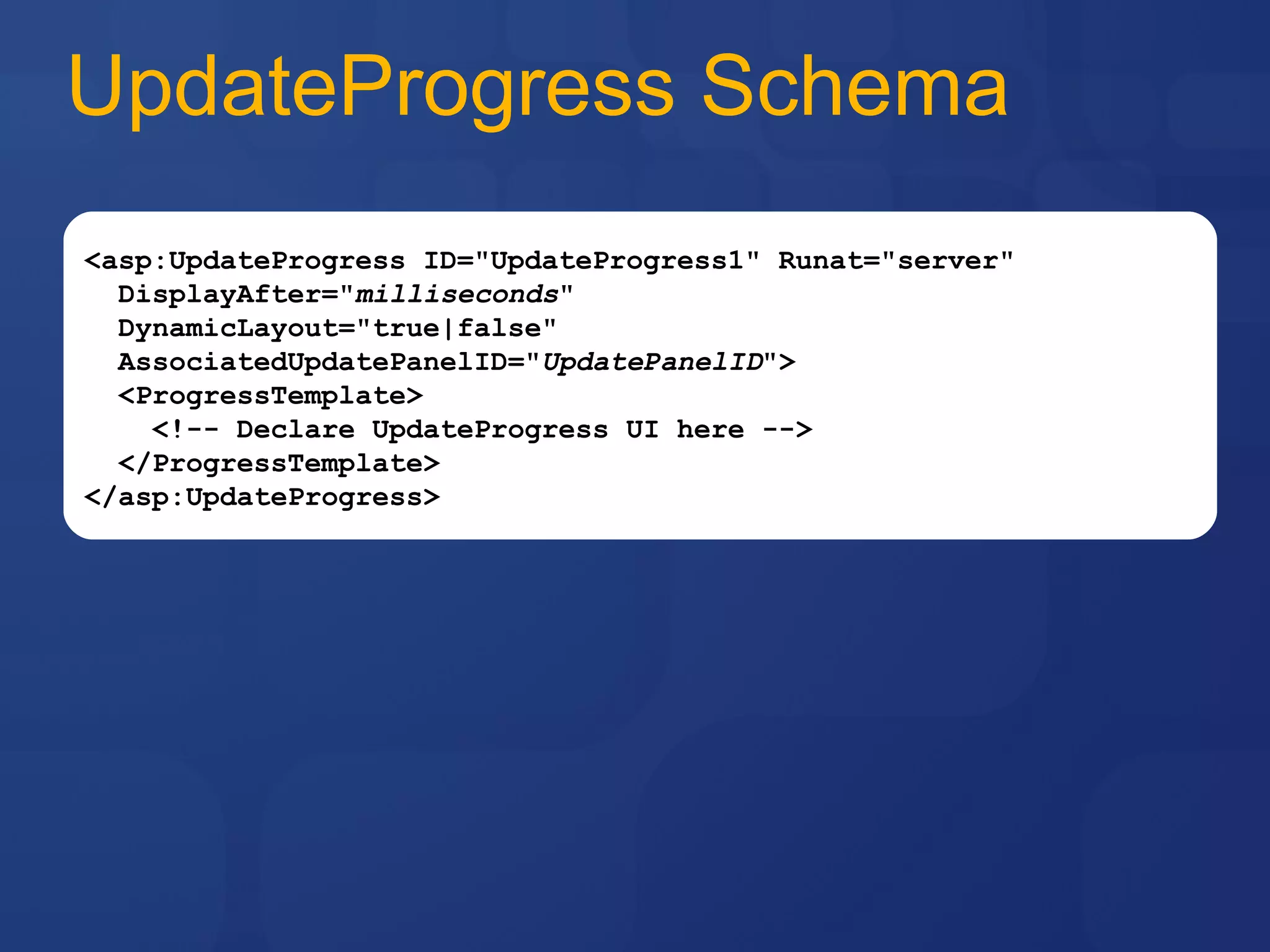
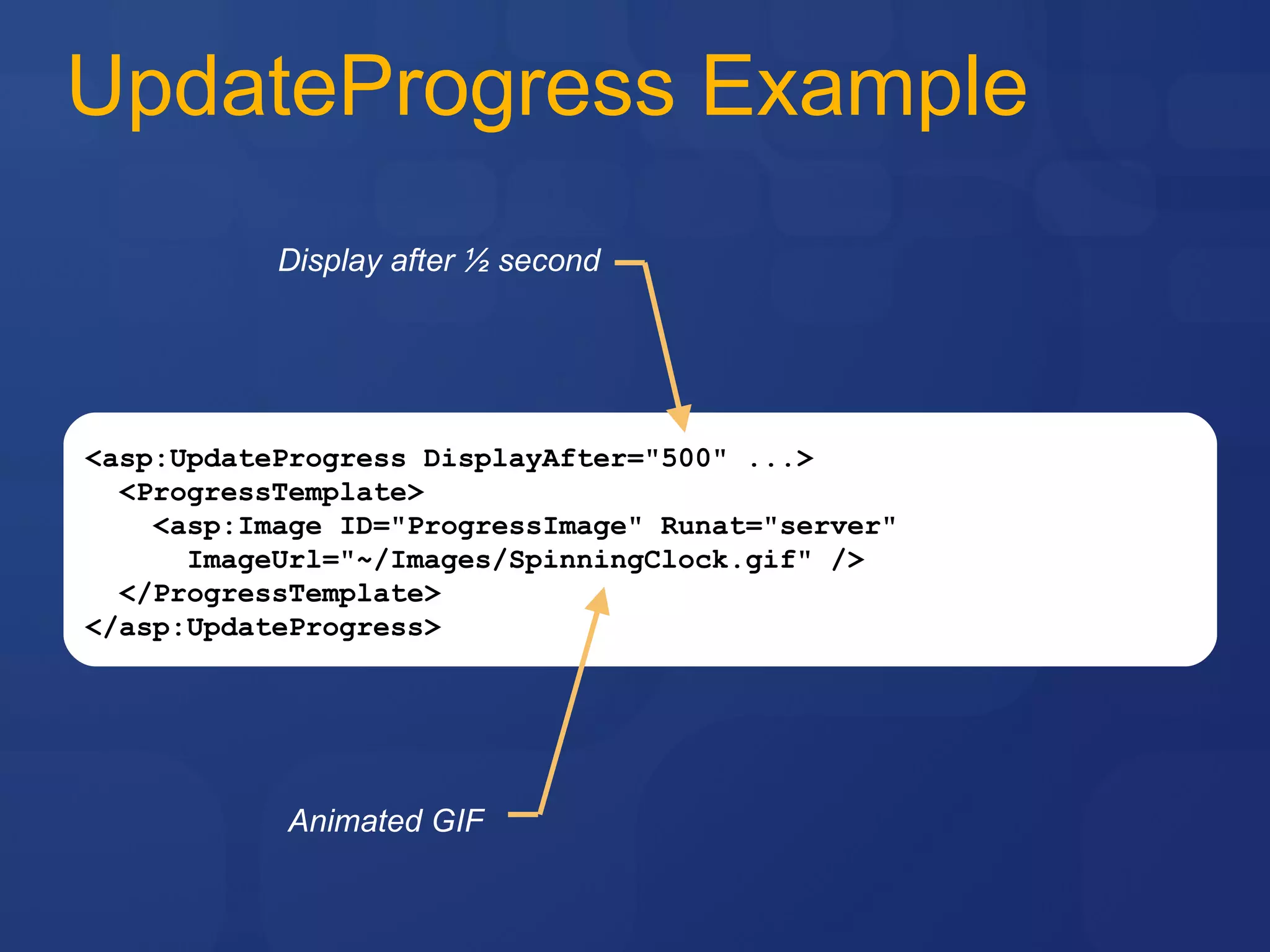
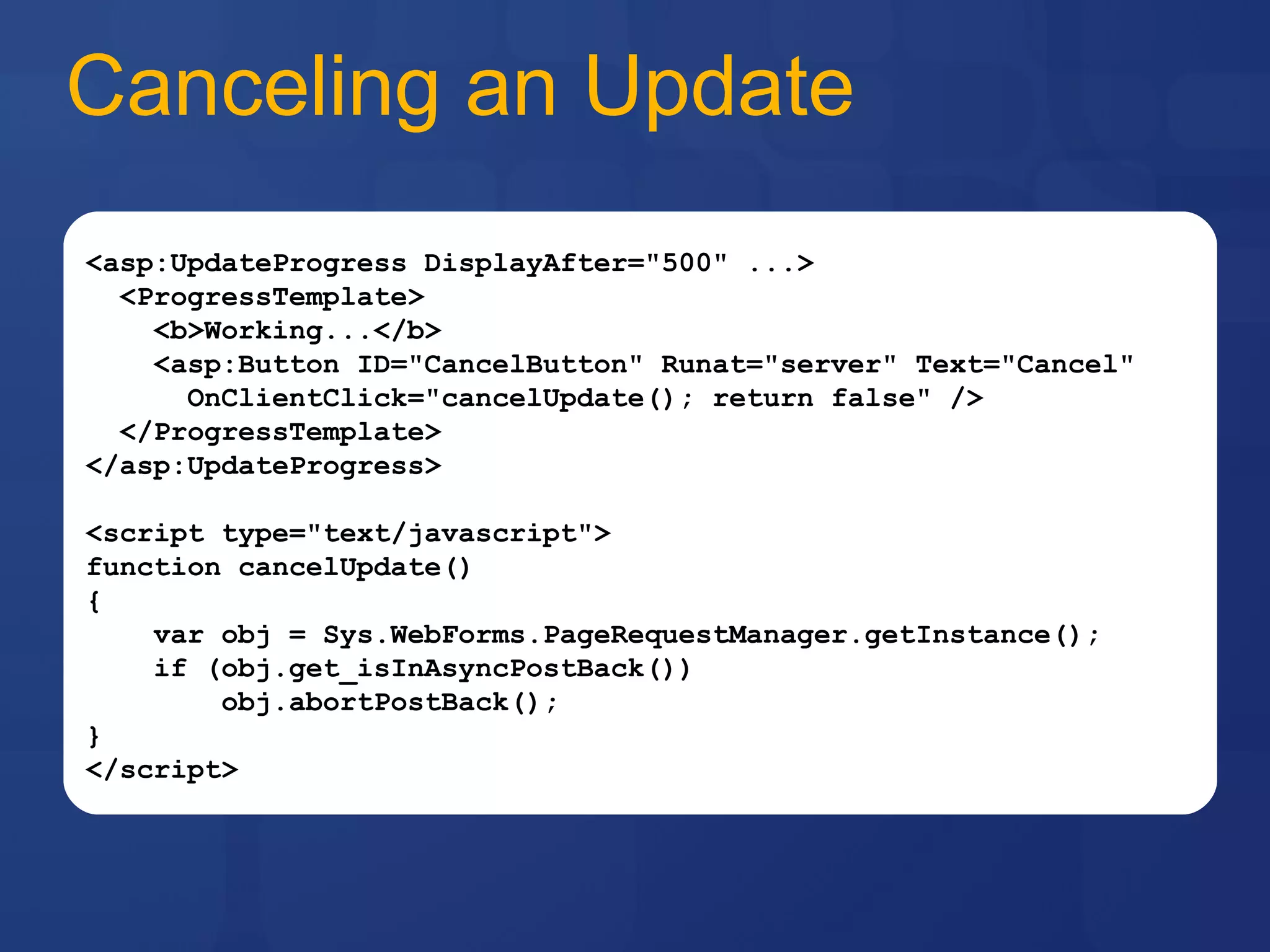

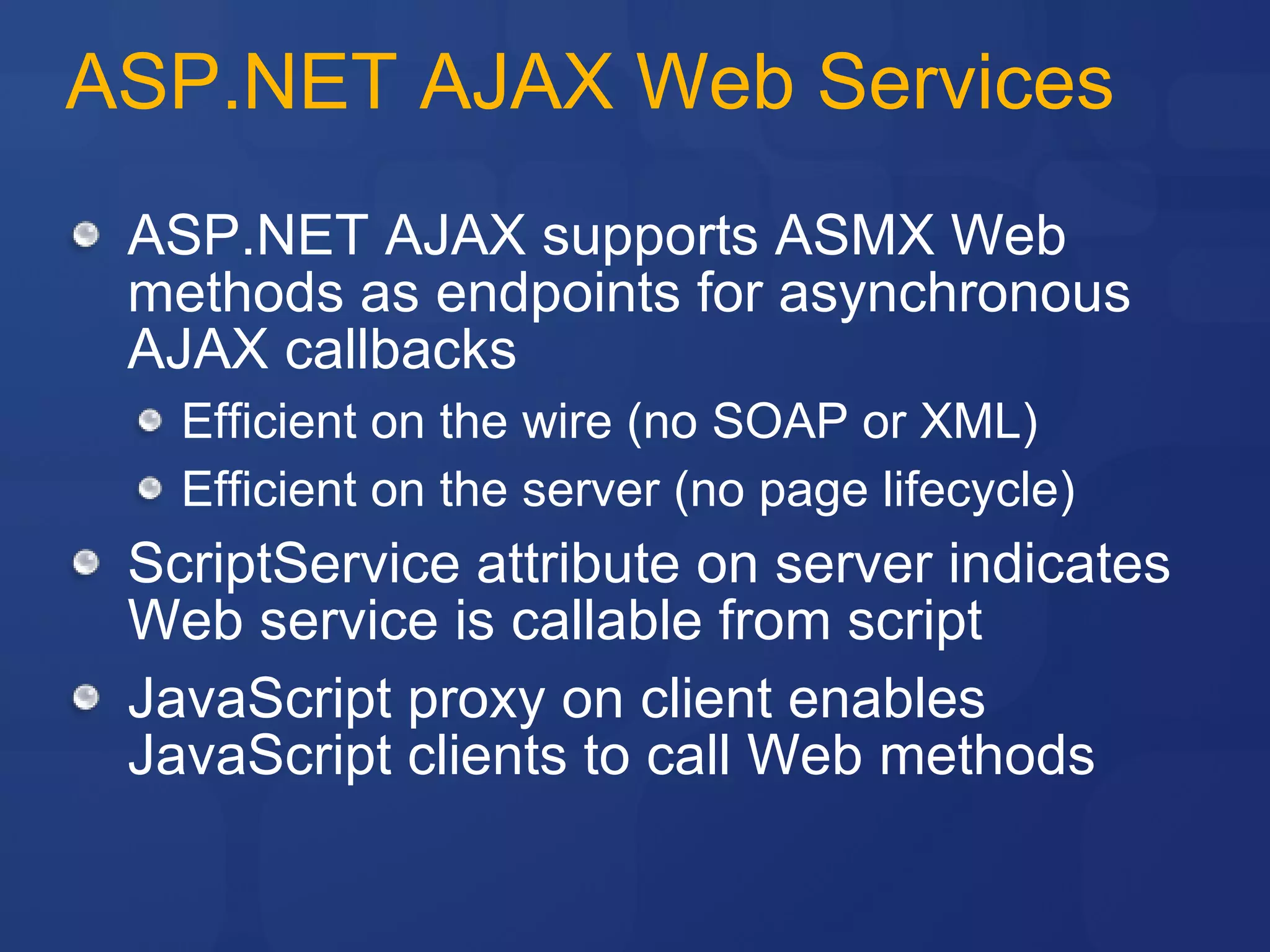
![Script-Callable Web Service [System.Web.Script.Services.ScriptService] public class ZipCodeService : System.Web.Services.WebService { [System.Web.Services.WebMethod] public string[] GetCityAndState (string zip) { ... } }](https://image.slidesharecdn.com/2-asp-dotnetajaxextensions-090823095130-phpapp02/75/2-Asp-Dot-Net-Ajax-Extensions-22-2048.jpg)
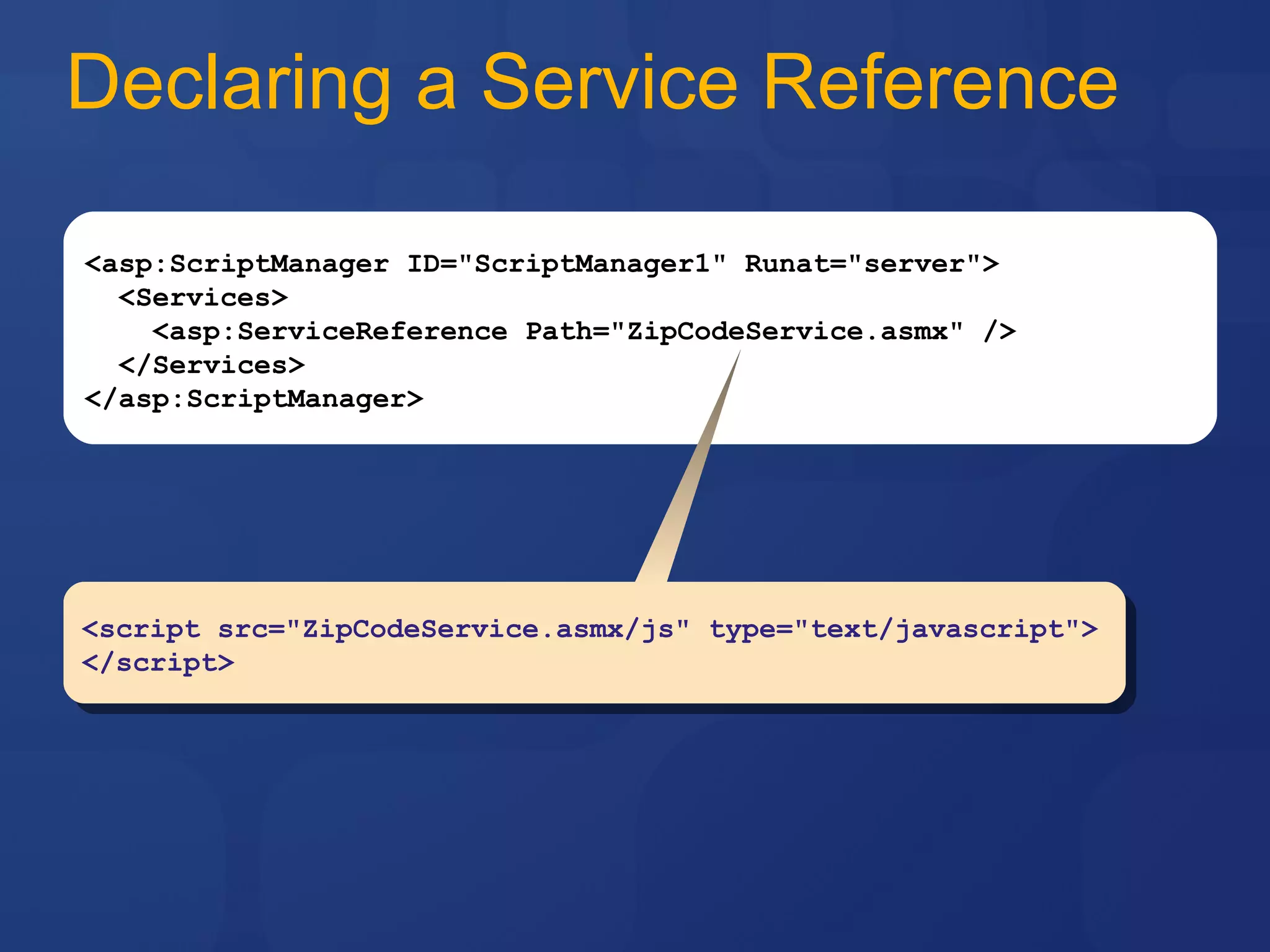
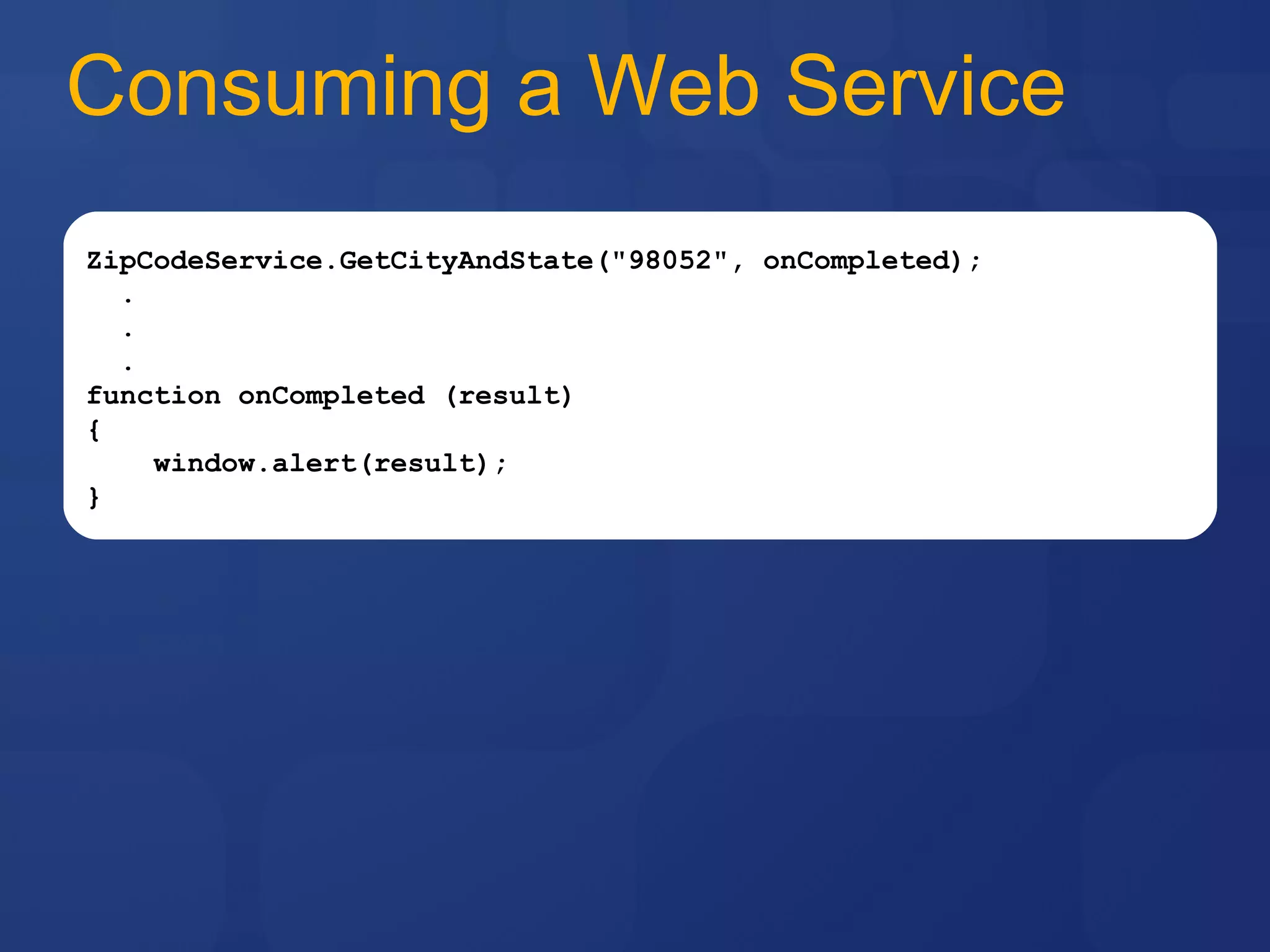
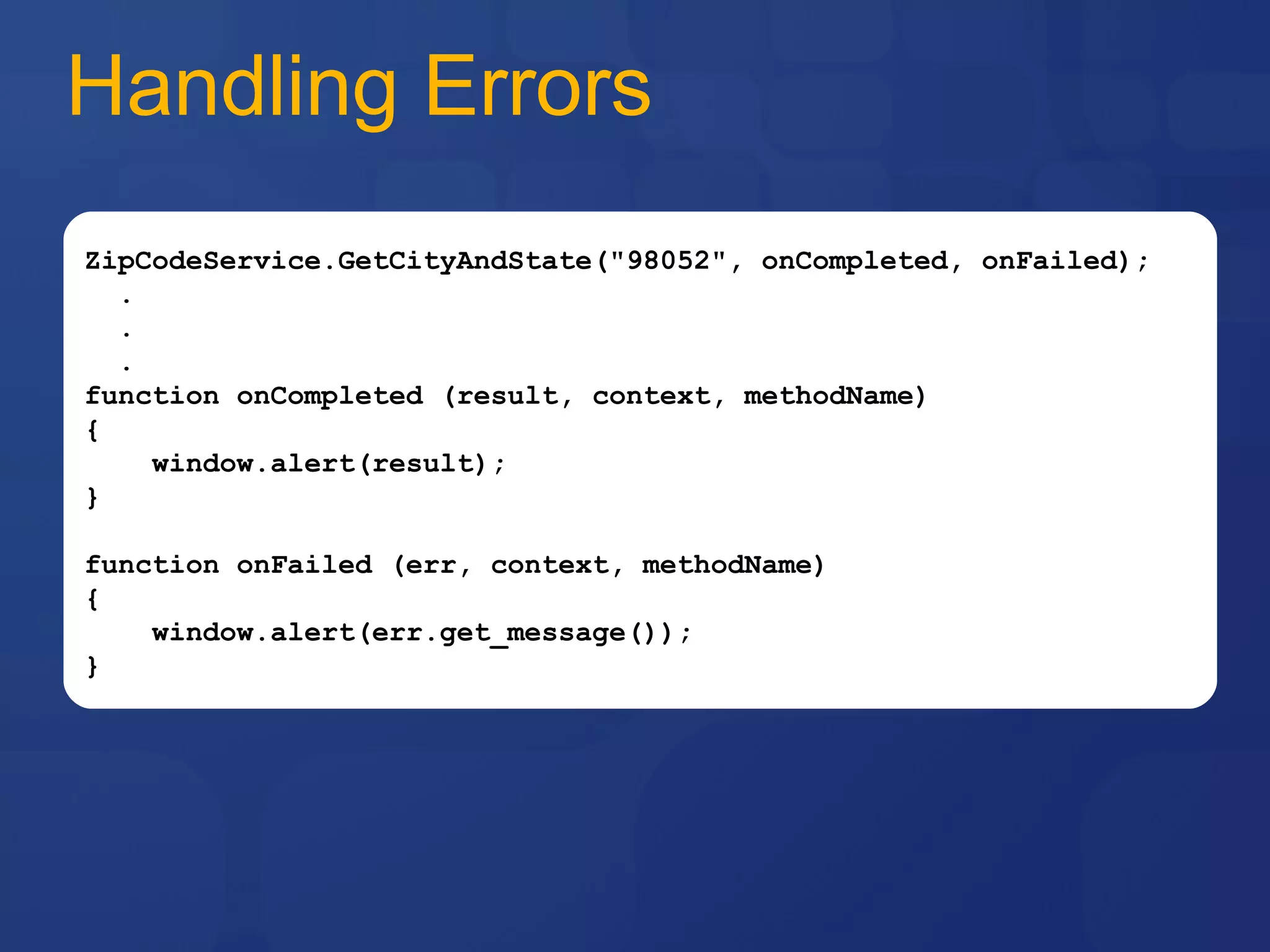

![ASMX Wire Format POST /AtlasRC/ZipCodeService.asmx/GetCityAndState HTTP/1.1 Accept: */* Accept-Language: en-us Referer: http://localhost:1997/AtlasRC/ZipCodePage.aspx UA-CPU: x86 Accept-Encoding: gzip, deflate User-Agent: Mozilla/4.0 (compatible; MSIE 7.0; ...) Host: localhost:1997 Content-Length: 15 Connection: Keep-Alive Cache-Control: no-cache {"zip":"98052"} Request HTTP/1.1 200 OK Server: ASP.NET Development Server/8.0.0.0 Date: Fri, 29 Dec 2006 21:06:17 GMT X-AspNet-Version: 2.0.50727 Cache-Control: private, max-age=0 Content-Type: application/json; charset=utf-8 Content-Length: 16 Connection: Close ["REDMOND","WA"] Response JSON-encoded input JSON-encoded output](https://image.slidesharecdn.com/2-asp-dotnetajaxextensions-090823095130-phpapp02/75/2-Asp-Dot-Net-Ajax-Extensions-27-2048.jpg)
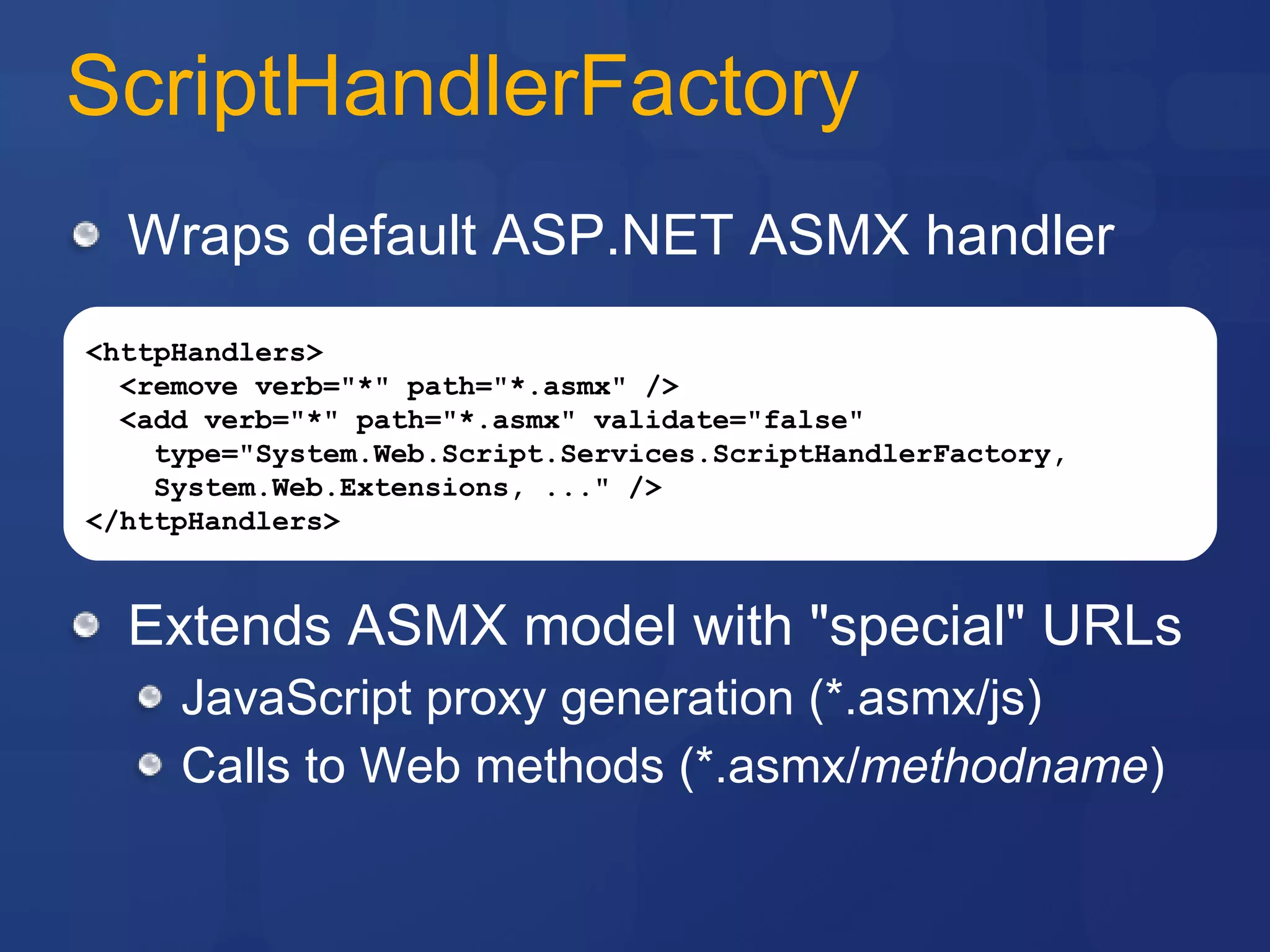
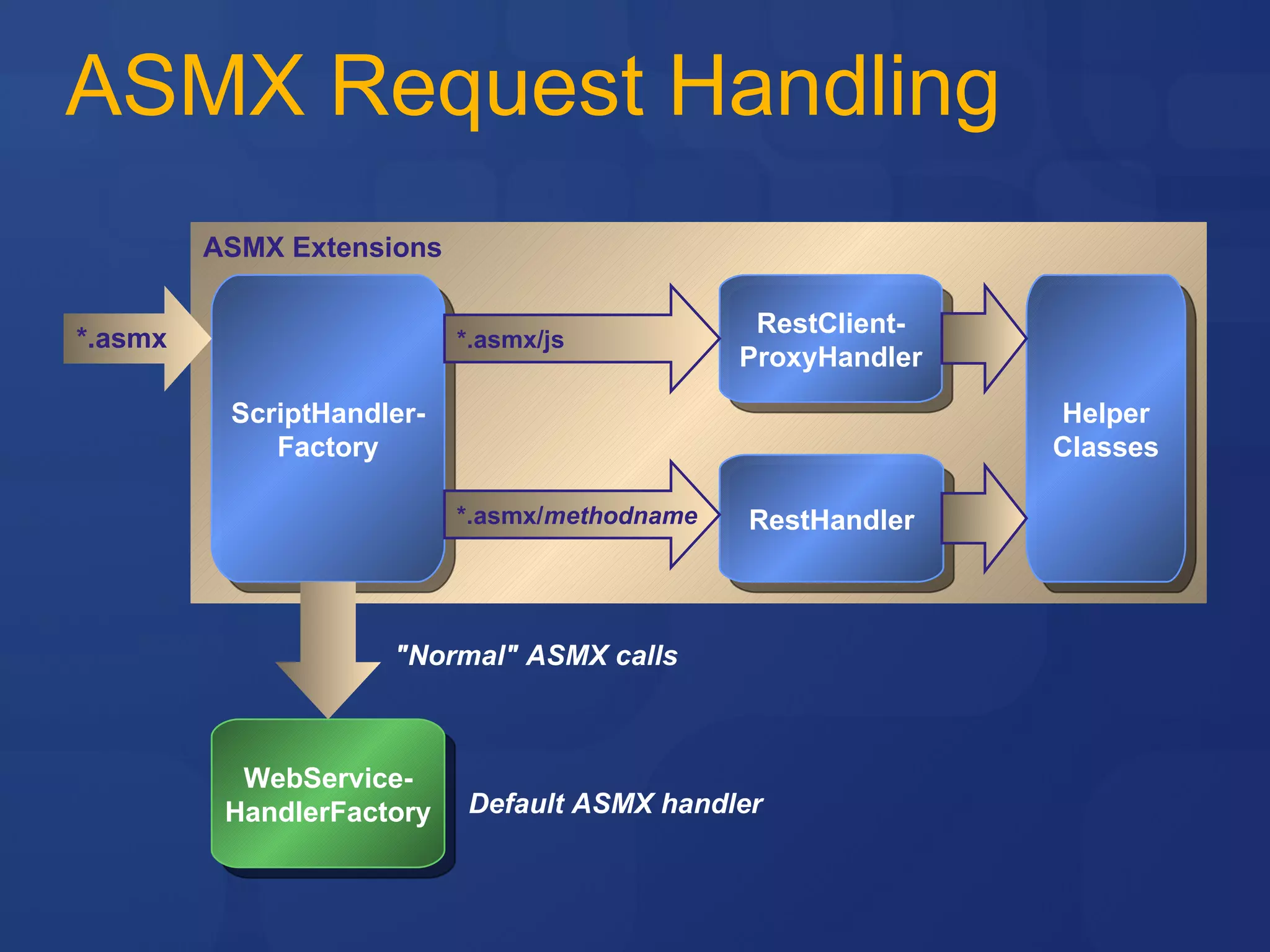
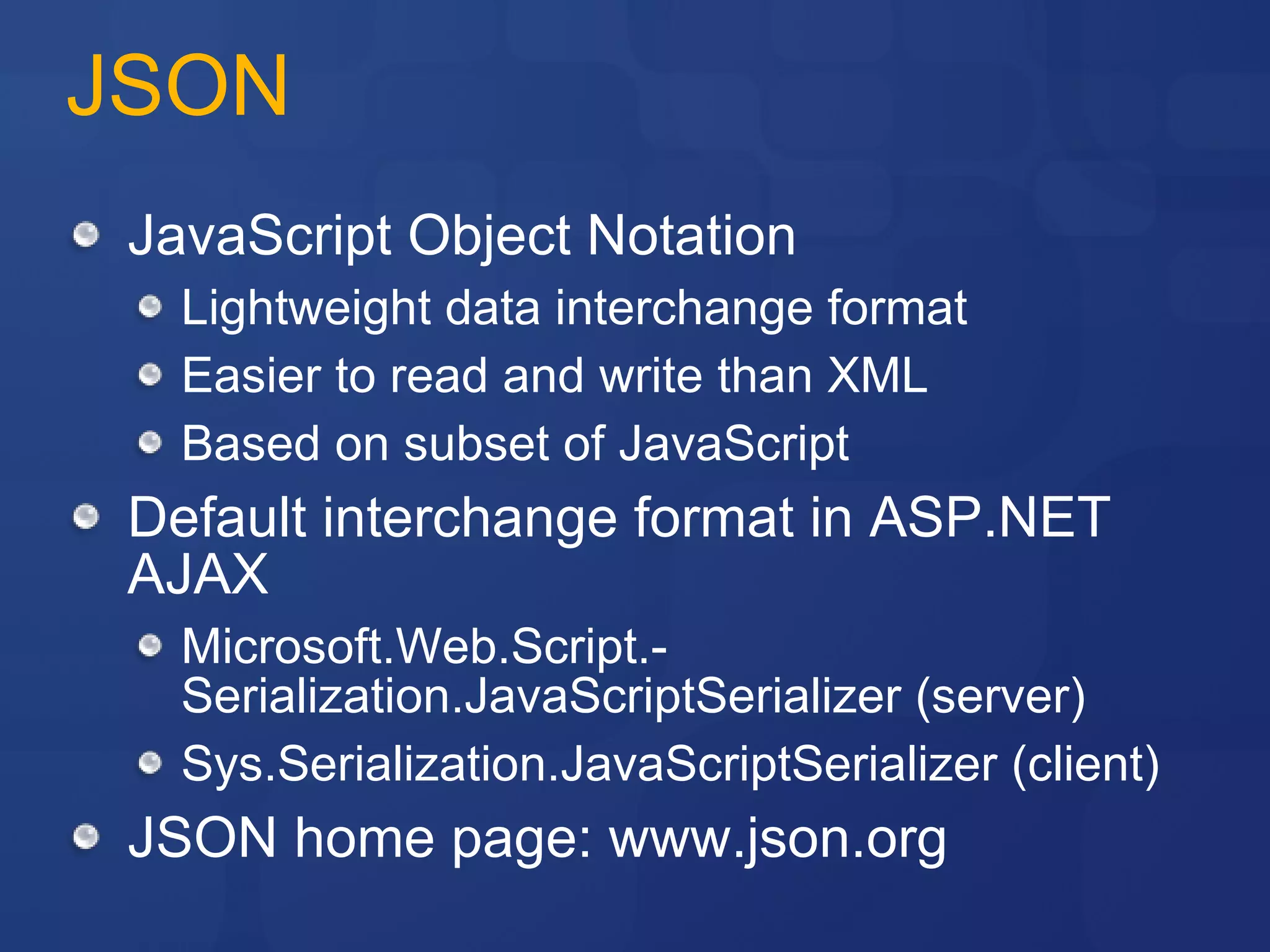
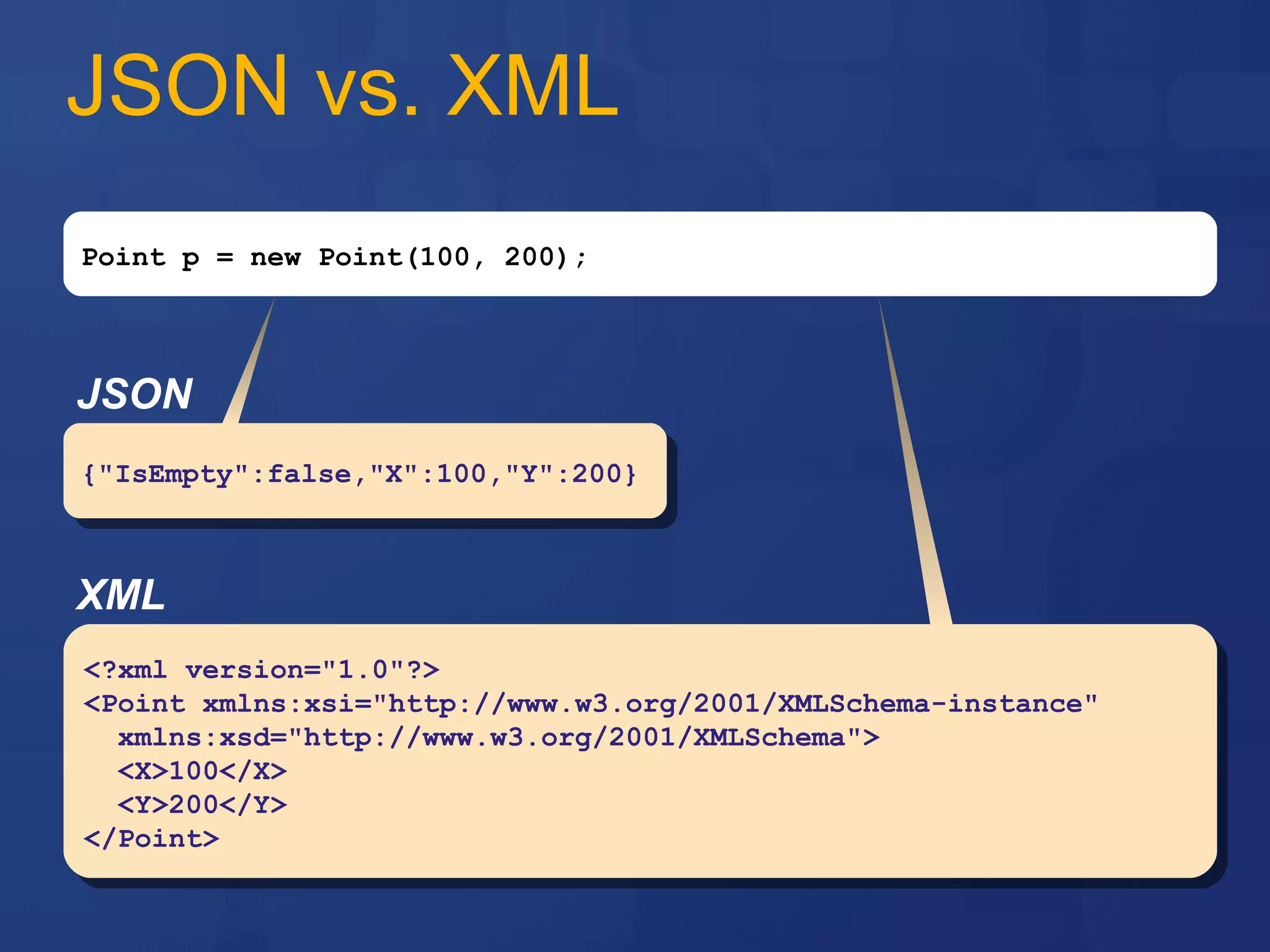
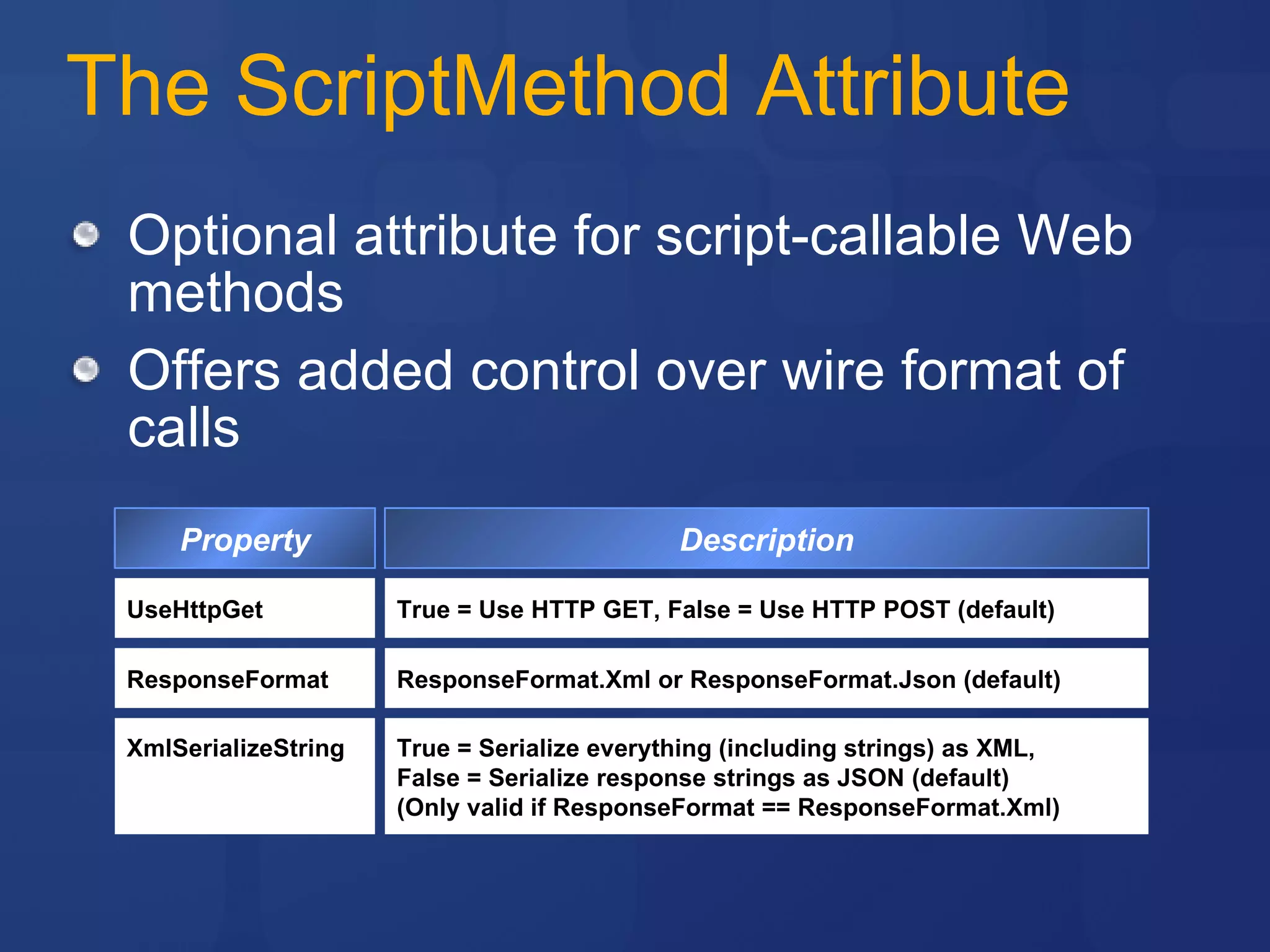
![Using ScriptMethod [System.Web.Script.Services.ScriptService] public class ZipCodeService : System.Web.Services.WebService { [System.Web.Services.WebMethod] [System.Web.Script.Services.ScriptMethod (ResponseFormat=ResponseFormat.Xml)] public XmlDocument GetCityAndState (string zip) { ... } } Method returns XML document, so serialize as XML rather than JSON](https://image.slidesharecdn.com/2-asp-dotnetajaxextensions-090823095130-phpapp02/75/2-Asp-Dot-Net-Ajax-Extensions-33-2048.jpg)
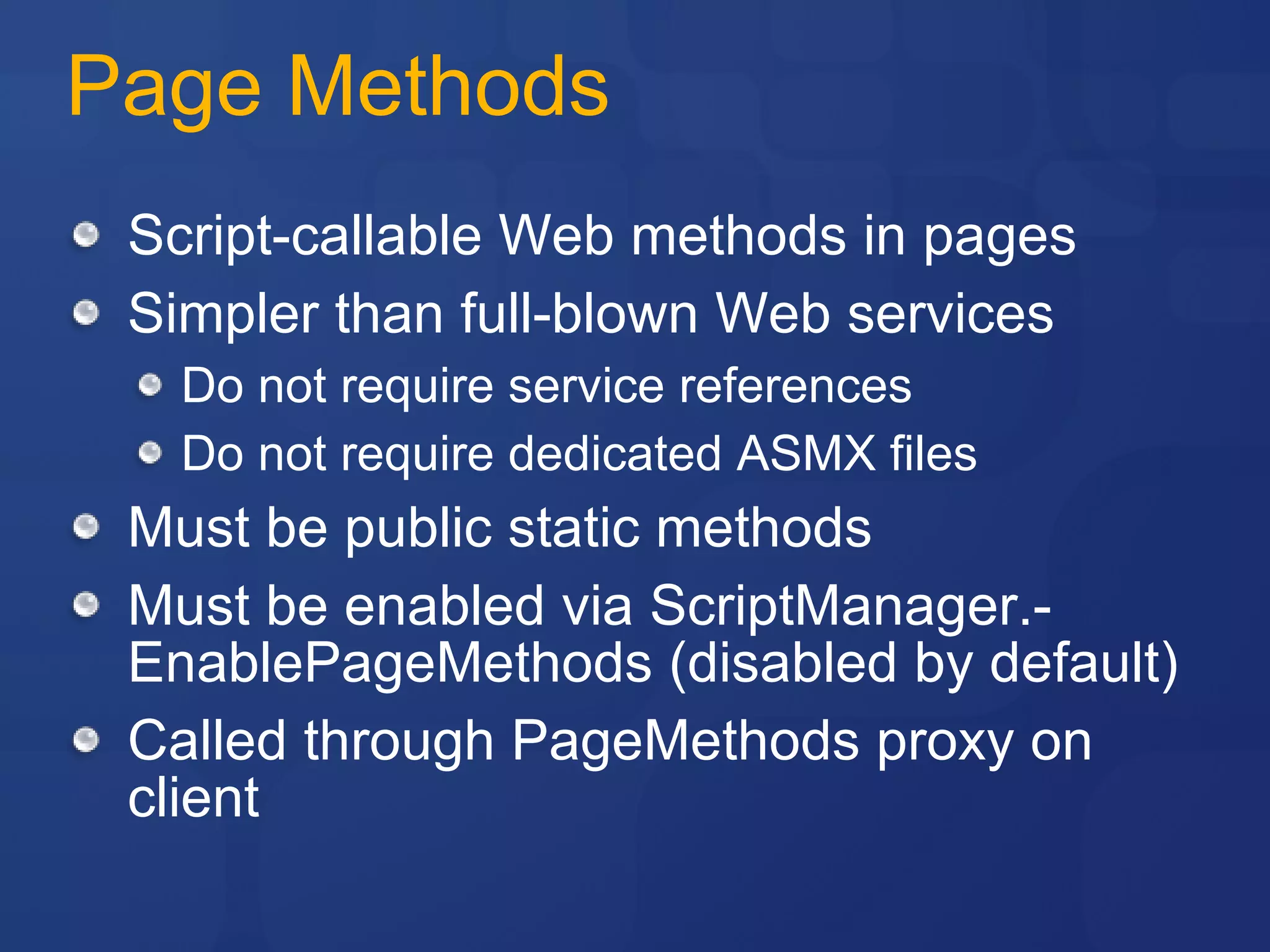
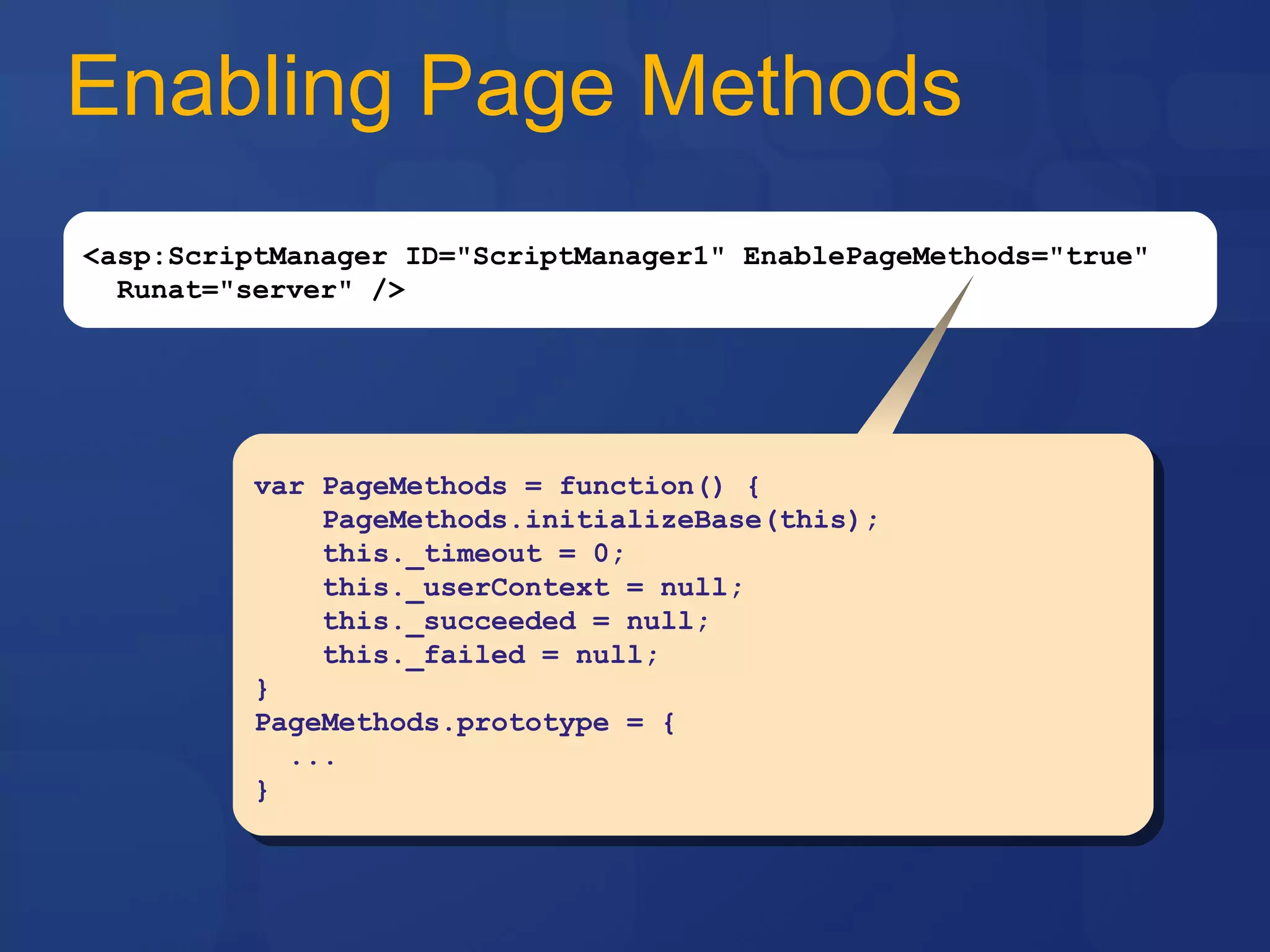
![Defining a Page Method public partial class MyPage : System.Web.UI.Page { [System.Web.Services.WebMethod] public static string[] GetCityAndState (string zip) { ... } ... }](https://image.slidesharecdn.com/2-asp-dotnetajaxextensions-090823095130-phpapp02/75/2-Asp-Dot-Net-Ajax-Extensions-36-2048.jpg)
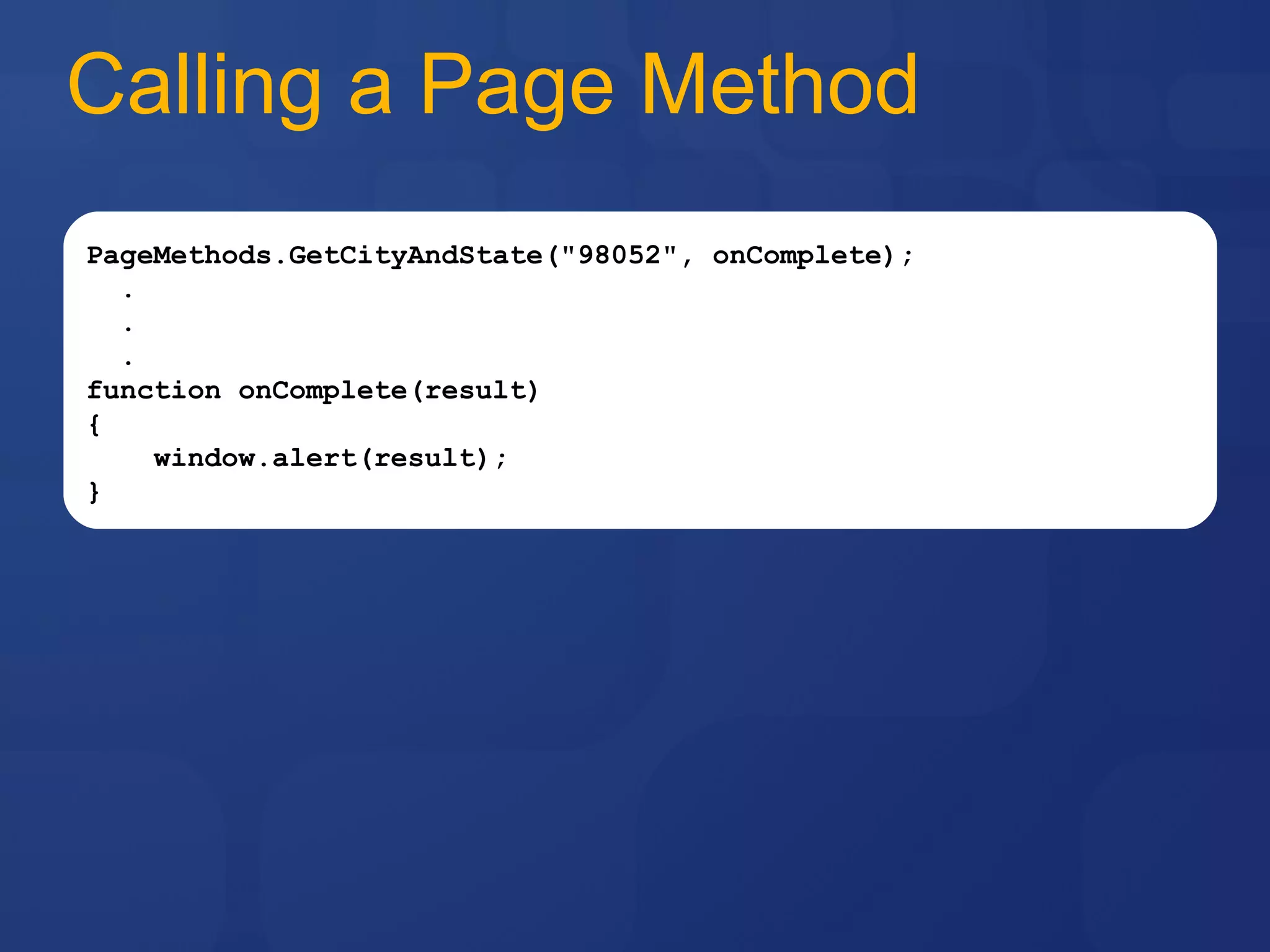

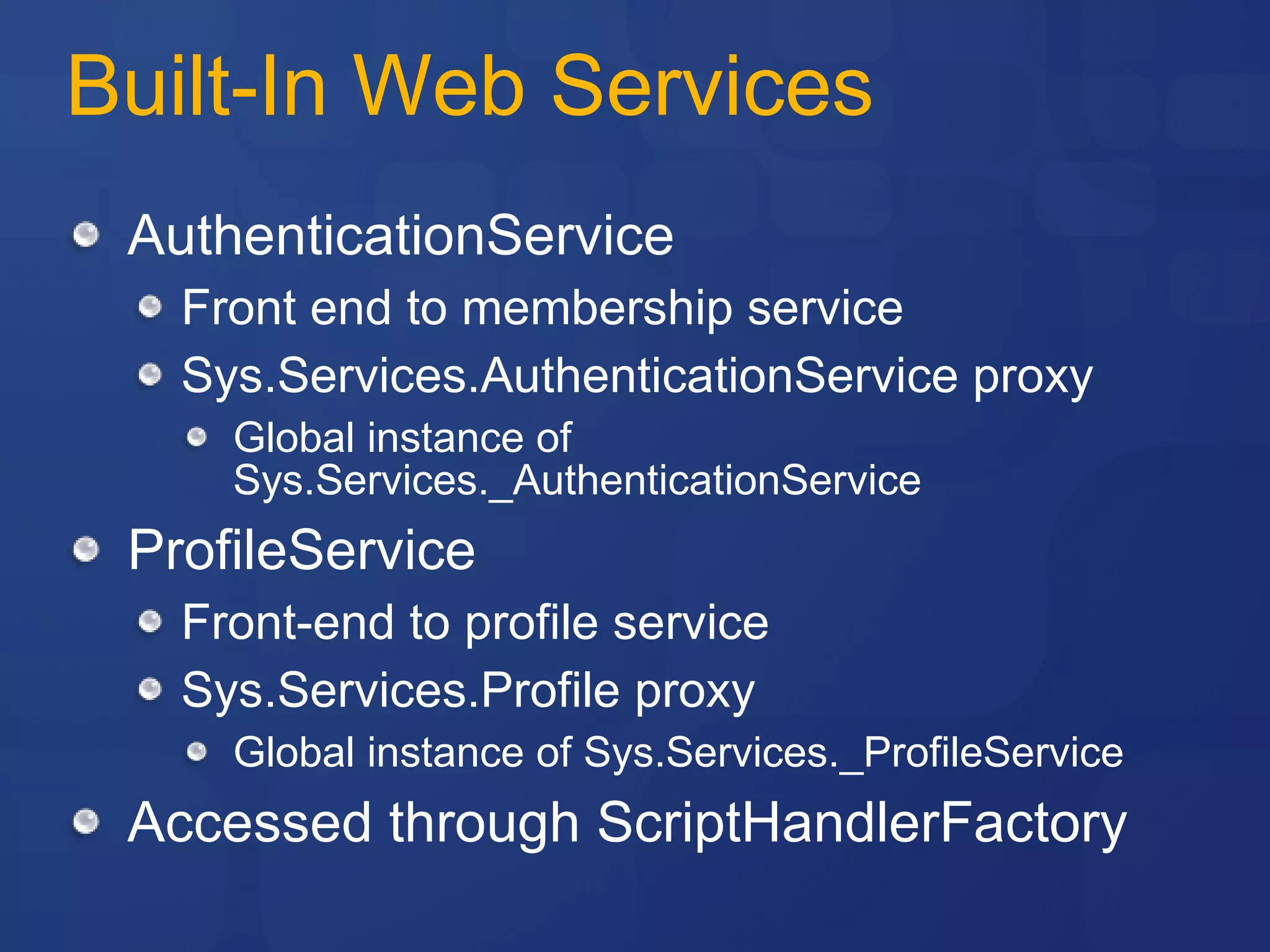
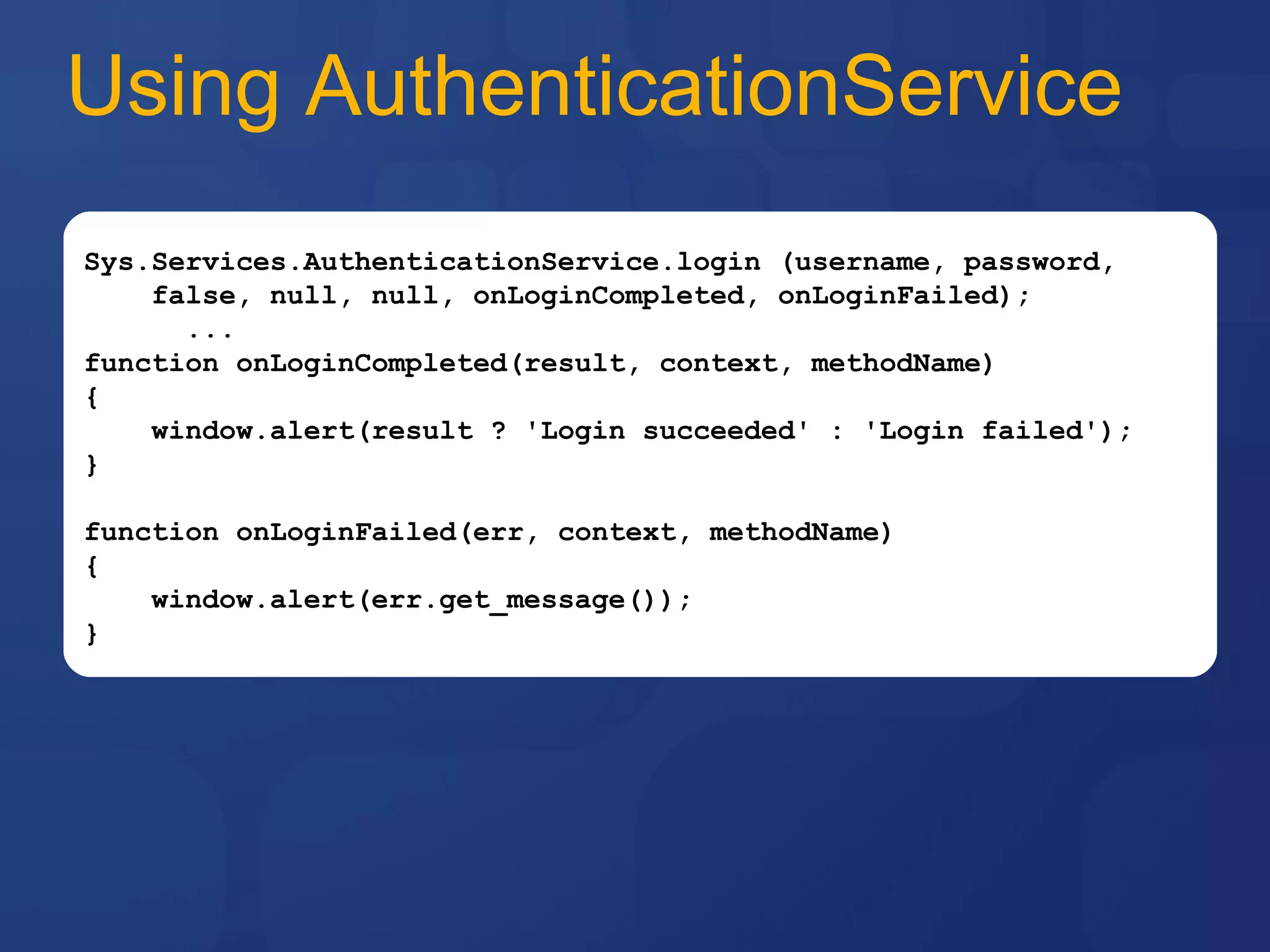
![Loading Profile Properties Sys.Services.ProfileService.load(['ScreenName'], onLoadCompleted, onLoadFailed); ... function onLoadCompleted(result, context, methodName) { window.alert(Sys.Services.ProfileService.properties.ScreenName); } function onLoadFailed(err, context, methodName) { window.alert(err.get_message()); } Pass null to load all profile properties](https://image.slidesharecdn.com/2-asp-dotnetajaxextensions-090823095130-phpapp02/75/2-Asp-Dot-Net-Ajax-Extensions-41-2048.jpg)
![Saving Profile Properties Sys.Services.ProfileService.properties.ScreenName = 'Bob'; Sys.Services.ProfileService.save(['ScreenName'], onSaveCompleted, onSaveFailed); ... function onSaveCompleted(result, context, methodName) { window.alert('Save succeeded'); } function onSaveFailed(err, context, methodName) { window.alert(err.get_message()); } Pass null to save all profile properties](https://image.slidesharecdn.com/2-asp-dotnetajaxextensions-090823095130-phpapp02/75/2-Asp-Dot-Net-Ajax-Extensions-42-2048.jpg)
